Bid & Pursuit Leadership
A master of the supplier/client relationship, you’re a strategist, a project manager, a connoisseur of compelling written content . . . and you’re always looking to up-level the skills of those you lead in your pursuit of mission-critical contracts and key accounts.
ACADEMY KNOWLEDGE BASE
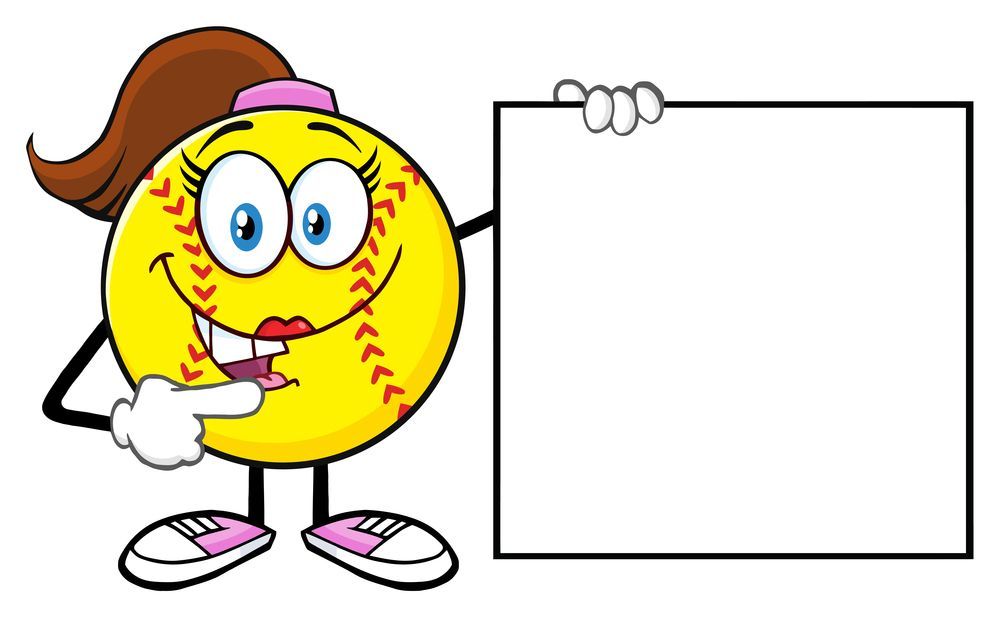
By Jordan Kelly
•
September 13, 2025
‘Pitch’ – a buzz word borrowed from the advertising industry – is a term some of the “cooler types” in other industries like to throw around . It’s also close to my most despised term. Why? Ask any customer, client or professional tender evaluator if they like to be “pitched” to . . . and you’ll be treated to a range of impassioned responses with a clear central theme: Just like you, clients and procurement professionals don’t like to be “sold” (what they like, is to think they are making balanced, well-informed procurement decisions). They certainly don’t relish being forced to listen to a salesy, supplier-centric, “push” monologue (or to read the written equivalent). And that, of course, is exactly what a “pitch” is. Even the use of the word “pitch” is an expression of self-centred thinking. It’s an indication of the place its user is coming from: A short-term-focused, whatever-we-have-to-do-or-say-to-bag-this-deal mindset. (Which is bad enough in its own right, if you value successful incumbency and/or repeat business.) Most “bid strategy” workshops I’ve sat in on (i.e. not as the facilitator) are little more than pitch development sessions. The participants – and worse still, often also the facilitator or leader – bangs on about “win themes” and “silver bullets” . . . and other concepts that frequently, at root, are actually more about the bidder than the client. The Pitchfest Litmus Test Let me give you a litmus test to use, in a bid strategy workshop, that will hold up a mirror to the process and indicate to you whether you’re developing a genuinely client-centric bid strategy, or a self-centric pitchfest of “things you can say” in your proposal. Here it is: Has anybody made an utterance to the effect of, “coming up” with (some form of) a “value proposition” (which, in reality, is little different to a “win theme” or “silver bullet”)? Or, in fact, “coming up” with anything? What will ring the client’s bell most vigorously is not your “win theme”, “silver bullet”, “value proposition” or anything else you “come up with” to say. What will really capture them is your demonstration of a deep and detailed understanding of their world, their organisation and the circumstances surrounding their intended procurement . . . followed by your identification of their related challenges and priorities, and then the alignment of a success-critical competitive strength on your part. A long way from a “pitch”, isn’t it? A Mind Picture to Help You Avoid Temptation Let me implant a vision in your mind that should help you – as an individual of dignity – develop a healthy degree of “cringe factor” for the whole notion of a “pitch”. I once witnessed an advertising agency giving its pitch for a potential new account. (Admittedly, this was quite some years ago, before the proliferation of easy-to-use digital media technologies.) Three women in suits stood side by side in front of a small group of senior executives and marketing personnel from the prospective client organisation. Each held up a “storyboard”. Some “happy” music started playing. With over-exaggerated grins, the three women each started bopping up and down to a jingle on a ghetto blaster while wobbling their respective storyboards, Rolf Harris-style. And then came the truly unthinkable: They started singing. That should embarrass you, just reading it. Keep that picture in mind next time you suspect you may be entering into “pitch” territory – in your bid strategy workshops or even in your language or in your thinking.

By Jordan Kelly
•
April 17, 2025
Here are four prime no-no’s when giving shortlistee presentations: 1. Don’t use lots of unexplained technical jargon to make yourself sound smart. ( NB: The same advice applies to your written submissions.) 2. Don’t let everyone know how important you are. 3. Don’t recite your presentation from memory or sound as though you are. 4. Don’t cram your slides with numerous text bullet points in multiple fonts. Source: Chris Anderson’s ‘How to Give a Killer Presentation’, Harvard Business Review.

By Jordan Kelly
•
March 27, 2025
How do you slash the cost of bidding without bringing about a correspondent drop in submission quality? I’m about to present you with nine suggestions which, when implemented, will not only save you time and resources (read: budget) but will, in fact, streamline the process and produce a superior end product. Fair warning: Some are […]

By Jordan Kelly
•
March 2, 2025
Whilst the first and most immediately obvious step in improving poor articulation performance in a submission is to subject it to a rigorous editing process, there’s almost always a greater issue at play. That issue is the largely non-client-specific (at least, not convincingly specific) and generally “same, same” nature of the content . . . the supplier-focused “brochureware” that results from an unclear, uncertain or absent bid strategy. Or an insufficiently documented one. In almost every bidding enterprise I’ve worked with, writers have previously had to either rely on little more than workshop notes, together with existing generic content, to inform their response sections. For the most part, they’re forced to interpret and piece together in their own minds, the intended underpinning strategy and guiding themes supposedly resulting from planning sessions. In many cases, they’re faced with making up the content themselves without any guidance. It’s critical to recognise that producing a client-focused submission requires more than a simple emphasis on writing techniques and editing processes (e.g. flipping sentences around to commence with the client organisation’s name versus the bidder’s). If writers are given a comprehensive and user-friendly bid strategy blueprint to guide them, and along the way their outputs are nurtured by the appointed strategist within the group, their writing should, by default, adequately convey the bid strategy. And it should do so in a client-focused manner.

By Jordan Kelly
•
March 2, 2025
One of the less tangible, less immediately “visible” reasons for the loss of either a new-business pursuit, or an existing account, is a misalignment between organisational cultures. I’ve seen this happen on a number of occasions. One that springs colorfully to mind involved an SME client, quite some years ago: A sizeable print management firm was pursuing an account with the Australian operations of a large consumer goods multinational, with requirements that included high-volume direct mail campaign activity. The business development operative (“BD”) on this account had, for over a year, been aggressively endeavouring to win over the account from a competitor. Each time he’d gotten close to potentially consummating the deal, however, this potential client appeared to back off. Finally, he’d moved the relationship to the stage where a serious, formal proposal had been requested of him . . . the point at which he contacted me. When the Client’s Psychology Differs from Yours Conducting a detailed interview with this BD to understand the client’s psychology, it became clear to me that the BD’s aggressive and gung ho culture (which was also that of his company at large) was at complete loggerheads with the far softer, more relationship-respecting modus operandi of the client organisation. It didn’t take me long to work out from an analysis of the historical dialogue that there was, in fact, no lack of interest in the service and other aspects of this provider’s offer. Rather, there was pushback based on this BD’s manner and approach. He didn’t see it. Not only was he oblivious to it, he advised me that when I’d produced the proposal he was tasking me with, he intended to brandish it forcefully before the client representative with an ultimatum that she make a decision forthwith or . . . well, the rest of the intended statement was quite colorful (something to the effect of "shit or get off the pot"). With some considerable persuasive effort, I managed to convince him not to take this stance. I suggested that, instead, he recognise the nature of the corporate culture he was dealing with and take a far more empathetic approach. Long story short: A little bit of “empathy” and a couple of weeks’ more patience on the BD’s part, and he bagged a new, $20m per annum account for his employer. The moral of the story is this: The Client Knows . . . Either Consciously or Subconsciously When pursuing any type of account, project, implementation, or other form of deal that requires your people to work closely with the client organisation, take culture seriously. Even if the potential client doesn’t consciously recognise the reason for any resistance on their own part, he or she will “at a gut level” detect cultural misalignment. And even if you do win the deal, a poor cultural match has the potential to be, at best, a constant challenge in the ensuing relationship. At worst, it has the potential to create disaster. Here are five steps you can take in the event that you sense a potential cultural mismatch: 5 Steps for Averting or Dealing with A Cultural Mismatch Determine the degree of mis-match. Determine whether or not this has, or may, cause mis-alignment in more tangible ways as the relationship progresses. If, given your consideration of these facts, you decide to press ahead, map out a strategy for addressing and to the greatest extent possible overcoming the mis-match. Where possible, make the elements of your plan measurable by, for example, formulating strategic Key Performance Indicators (KPIs). Recognise that this will be an issue that needs constant monitoring throughout the life of the project or contract. Be upfront with the client about your plans and efforts. Again, you’re probably only kidding yourself if you think the client organisation is unaware of the cultural mis-alignment. Far better that you demonstrate your own awareness, and your proactive approach to striving for a successful working relationship.

By Jordan Kelly
•
March 2, 2025
When you’re under the pump with a short submission timeframe, your best default strategy for getting a top-notch bid out the door in good time and with the least stress possible is to “go with the current” in terms of people’s natural talents. You can coach people in their areas of weakness to a reasonable degree, but rarely will they be great in those particular aspects of bid production. The fact is, people generally gravitate back to the aspects in which they naturally excel and endeavour to avoid those in which they don’t. And when a bid manager is under the pump, the cold, hard fact of the matter is that he or she simply doesn’t have the time to coach or cajole. Identify the Priority Skills Needed The first step is to accurately identify the priority skills required for each part of the submission and the process, giving careful consideration to which individuals possess these. It’s also smart to consider personality traits or work habits that stand to either propel or impede progress towards the finish line. Really think about each person and who (rather than what ) they are. ‘Day job’ position titles can be misleading in the context of a bid. Often, the strengths and weaknesses you’d assume of an individual in a particular role just don’t import across into a bid team environment in the way you’d expect them to. I’ll cite as a case study, a small, component operation of a larger organisation with which I had been working. One of the operation’s few "white collar" staff members (aside from the GM) was assigned as bid manager. It was a pressure cooker timeframe and, a few days after kick-off, the schedule was already floundering. In short, this assumedly "natural" bid manager appointment was a disastrous choice. As it happened, fate graciously stepped in and saw that individual suddenly pulled off onto another contract elsewhere. Because I was working with the team by remote control, there was little choice but for the Construction Manager to take over the bid management role. ‘Humble Hammer Swinger’ Saves the Day Fate dealt the bid a lucky hand that day. The previous appointee’s weakness was the Construction Manager’s strength. This "humble hammer swinger" (his own words) made a brilliant bid manager. He was organised, efficient, exercised total diligence in keeping his own commitments, and had an affable but effective way of holding others to their's. His humility came in handy, too: If he could see anything going off the rails, he was quick to pick up the phone for advice. The fact that he couldn’t string two coherent sentences together on paper turned out to be inconsequential. When the now-former bid manager returned to the team, he gravitated directly towards - and excelled at – the bid’s writing tasks, taking on those that had, in fact, been assigned to the Construction Manager. So, by complete accident, we ended up with a highly functional bid team and a top-notch bid out the door in what, for that particular operation, was apparently record time. To re-emphasise the moral of the story: When time is unavoidably tight, ensure the highest quality and the least stress by getting to know your "human resources" and letting each wear the cap that most comfortably fits him or her.

By Jordan Kelly
•
March 2, 2025
This article is a direct follow-on from, ‘The 11 Stages of Competent & Comprehensive Pre-Probity Bid Management’. Those stages that should be conducted post -release of the RFP are: Stage One : Hold a session to ‘reality check’ and finalise the Strategy Document against Expression of Interest or Request for Proposal content and requirements. It is critical that all participants undertake – prior to this session – their own personal, detailed reading of the market call documentation. Without this prior study of the document, the first few hours of the session will be soaked up by this exercise or - if the session proceeds without participants having read the EOI or RFP - the only contributors of value to the session will be those whom have read it. The purpose of the session is to complete and “reality check” the pre-probity-formulated interim strategy document against the client organisation’s actual information and requirements. Where significant additions or departures are identified, a revised Strategy Document must be issued. (It can reasonably be assumed that, most times, a revised Strategy Document will be necessary.) Stage Two : Submit the Bid Strategy Document to senior management for approval. This is a critical step in ensuring that the underlying strategy and the content of a proposed end submission is not rejected, by senior executives, at the eleventh hour. Stage Three : Confirm or modify brief to designers based on above. With reference to Stage 11: Formulate brief for designers (see ‘The 11 Stages of Competent & Comprehensive Pre-Probity Bid Management '', this earlier “heads up” preparatory brief should now be revised/refined/supplemented and formalised). Stage Four : The Strategy Document should be issued to authors, and a writing coaching session should be held for those authors (including subject matter experts) contributing to each submission section. A bid-specific coaching session is a valuable exercise, to identify the degree of writing competence possessed by each contributor and apportion any assistance resources early and appropriately. Stage Five : Early-Stage Review. The Bid Strategist, along with whomever the Bid Manager has appointed as the editor of the end submission, should review each contributor’s first few paragraphs / first page, to determine whether he or she is “on the right track” with his or her copy. This allows for the provision of direction and any material input in the early stages, as opposed to the latter stages (which creates editing and re-writing bottlenecks dangerously close to the submission deadline). Stage Six : Strategic diagrammatic support identified and briefs given. Opportunities to support/supplement the written content with diagrammatic and other visual content should be identified, and the relevant subject matter experts pulled in to brief the design team (to whom preliminary relevant copy sections should be provided). Stage Seven : Subsequent series of reviews. Upload of first and subsequent drafts (allow for at least five ) by the date identified jointly by the Bid Strategist, Bid Manager and editor. The number and timeframes for these reviews should be realistic to accommodate the number of Bid Manager/author exchanges that will be necessary to bring copy to Final. Take into consideration that: a) Where contributors are not professional writers, considerable redrafting and/or editing will likely be necessary. b) Where professional writers are producing the content, these writers are unlikely to also be subject matter experts, and revisions to the substance and detail of their copy will likely be necessary when reviewed by the topic experts. c) Diagrammatic and other visual supplementation should be submitted back to the subject matter experts who briefed the design team. As above, this must be done with plenty of time to allow for several rounds of correctional iterations. Stage Eight : The Bid Manager should make a final review of content prior to tabling to the Pursuit Leader and Bid Strategist. The Bid Manager must ensure the draft submission is technologically sound, as well as comprehensive, in terms of strategy. If there are significant shortfalls in these areas, the Bid Manager should return the copy to the author for correction and/or completion. It should then be submitted back to the Bid Manager by the author. After the Bid Manager is satisfied with the soundness and comprehensiveness of the draft in question, the Pursuit Leader and Bid Strategist should be brought back into the review process. For quality control and consistency purposes, all copy (e.g. case studies, CVs, appendices) – within reason – should be reviewed by the Pursuit Leader and the Bid Strategist. Stage Nine : Production of Executive Summary (i.e. towards end of above process, when a more detailed and authoritative picture of the content is known). Writing a submission’s Executive Summary before the production of the bulk of its content, is illogical. An Executive Summary should be precisely that i.e. a Summary . Unfortunately, many (if not, most) bidders treat this as either a covering letter or a preamble sales piece. Stage Ten : Graphic production and checking. Review of the various iterations of the graphic design should follow the same basic procedural format as for the review of the written content. Stage Eleven : Senior management review/comment. The bid strategy document should be provided to any reviewing senior management who were not privy to it in the earlier stages, and in plenty of time for each to have read and absorbed it before receiving the proposed end submission for approval. Meantime, as a refresher, a summarised, key point version of the strategy document should be provided to those whom have already been provided with the fuller version. Stage Twelve : Final adjustment and editing to professionally blend in management additions and alterations. Do not underestimate the potential volume of revisions, additions and subtractions senior management has a propensity to request – especially if the bid involves joint venture partners and, thus, executives from several organisations (who may not be in agreement with each other on matters of detail). Stage Thirteen : Insertion of copy into page design framework. The Pursuit Leader, Bid Strategist and Bid Manager overview the intended final design production, quality-control-checking at the very finest level of detail, before delivery to prospective client organisation. See: ‘The 11 Stages of Competent & Comprehensive Pre-Probity Bid Management’ .

By Jordan Kelly
•
February 24, 2025
If – as pursuit leader or bid strategist – you haven’t checked off the following key preparatory measures before your bid writers put fingers to keyboard, you greatly risk falling into the standard default position i.e. section authors producing thinly-disguised "brochureware", and others producing what comes across as cut-and-pastes from a product or procedures manual. So ensure you can answer fully in the affirmative before you set your section authors loose on their tasks: Have you produced a comprehensive, high-readability, overarching strategy document? Have you produced writer’s guides – based on the above – for each major section or Schedule? Before finalising the above, have you shown these to several of the writers to ensure they are user-friendly from their perspective? Have you held a collective briefing session i.e. between the strategist, one or two other key participants in the strategy workshops, and the section authors i.e. to verbally explain the strategy and how it underpins or influences their sections? Have you returned to each section author, individually, following this initial collective briefing, to ensure they understand and can follow their respective writing guide? And that they have aligned the content of their writing guide with their section content plan? Does any section author feel he or she needs more supporting information that they need help to obtain? These are the key steps to ensuring bid content that reflects, and adheres to, a central, cohesive, underpinning strategy.

By Jordan Kelly
•
February 22, 2025
“It’s the deals you walk away from that make you rich, as much as the successful deals.” This line leapt out at me one night, when I was reading something as otherwise unrelated to bids as it gets. That simple, yet profound statement catapulted me straight back into bid strategy mode. Why? Because I’ve seen numerous companies insist on investing huge resources in a bid they didn’t have a chance of winning. And most times that bidder knew it. They knew their pre-sales engagement was inadequate (or non-existent). They knew their insider knowledge of the prospect organisation was insufficient. They weren’t even sure who they were really up against, or the competition’s standing with the prospect. They were aware of many other knowledge gaps they’d left it too late to address by the time the EOI / RFP / RFT was released. And they couldn’t put their hand on their heart and say they believed their offering was the prospect’s best option – a situation that may well not have altered even if they were in possession of a lot more information. Worst of all, sometimes they hadn’t even done sufficient research to determine whether or not the EOI, RFP or RFT was the real deal. (We all know it’s not uncommon for procuring organisations to issue a call for tenders without being in a position to actually finance the contract, or already knowing full well whom the contract will be awarded to, or simply to keep the incumbent on its toes.) ‘Oh Well. We’ll Just Go For It Anyway.’ But still these keen bidders insisted on going through the resource-draining motions of submitting a Response. And at the predictable outcome, there were numerous disappointed and demoralised staff members to console, all of whom now had to peddle furiously just to catch up with the responsibilities they’d put on hold during the all-consuming madness of the bid production period (which usually was frantic because, most times, they were playing catch-up in their information-gathering efforts). So why does a company take the decision to produce a submission for a bid contest it has little chance of winning? Let me give you just some of the reasons: 1) To be seen to be “in the game” because primary competitors are, or are assumed to be, bidding. 2) Their inadequate background/pre-sales research failed to identify a bad technological or cultural fit. (Pre-qualification processes will hopefully ensure technological capability. Cultural compatibility is a less tangible but equally important issue.) 3) The contract is with a high-profile organisation that would look impressive on the bidder’s client list and/or represent a valuable reference. 4) “ The company needs the business.” (Flawed logic in the extreme. It would be best identifying, researching and going after more achievable pursuits.) 5) Unrealistic thinking, plain and simple. Let’s consider each of these “reasons”. To be ‘in the game’. If your competitors have done a better job of their pre-sales research and relationship-building and – assuming they can put together a halfway decent proposal – how will it behoove your cause to have your half-baked bid laid out beside theirs in front of the evaluation team? Failure to identify a bad technological or cultural match. A poor technology fit is going to be obvious from the information you provide in your Response. How is that going to make you look? Firstly, most switched-on evaluation teams don’t like wasting their time any more than you’re going to have appreciated squandering your own resources. Secondly, conveying the impression of an ill-researched or unrealistic bidder is not the impression you want to leave with an organisation with which you may want to bid for work in the future (for a project, product or service your company is more suited to delivering). A poor cultural match has the potential to be, at best, a constant challenge, at worst, a complete disaster. If you’re a young, risk-taking, gung-ho sort of company, and the customer is old-school, staunch, slow-moving and bureaucratic, for example, project forward with a strong sense of reality before deciding to bid for a close, ongoing working relationship. The ‘If We Can Get This One’ syndrome. The higher you fly, the harder you fall. If a deal’s high-profile enough to “make” you, imagine how quickly it can break you if you do win it and you’re not really up for it. ‘We need the business.' At any cost? Does it fit with your overall corporate marketing strategy? Is it genuinely taking you places? How will the contract turn out if you don’t really have the resources it’s going to take to do the job well and create a happy, satisfied client or customer organisation? Lack of realism. See all the above. There’s so much downside and very little upside when you decide to enter a bidding contest you should have gracefully declined. Wasted budget, demoralised staff, compromised corporate image . . . One simple piece of advice: Be realistic. As you can see, there’s no point in being anything else but. Think of the opportunity cost in other areas where resources might have been far more profitably invested, and your corporate image enhanced rather than compromised. Think of the comparative ease of those sales efforts versus the effort of trying to put up a convincing case when you haven’t really got one.

By Jordan Kelly
•
February 22, 2025
If a company struggles to differentiate its product or service from that of its competition, the first element of any corrective strategy should be to seek to deepen the level at which it understands its prospects and its clients. Not all companies do this well. Most don’t. Why am I confident to make such a sweeping statement? I see the evidence on a daily basis as a bid strategist and writer, and as an evaluator and bid coach. When I take on a new client, almost without exception, that organisation’s previous bids, tenders and proposals literally shout self-centricity. Those that think they don’t, are always surprised to learn just how much further they could go in taking a genuinely client-centric approach and, in the process, de-commoditising themselves far more effectively. Symptoms of Self-centricity Let me demonstrate how a self-centric perspective shows up in a bidder’s documentation. I’ll focus on just one part of a bid document — the Executive Summary . Here are two examples that literally whack an evaluator between the eyes with this syndrome on the bidder’s part: Example One: ‘We’, ‘Our’, ‘Us’ I once evaluated a bid, the Executive Summary of which featured the seller’s name no less than 17 times in a short series of introductory paragraphs. Don’t laugh; a large percentage of these key front pieces end up with the seller’s or service provider’s name (or ‘we’, ‘our’ and ‘us’) at the beginning of most paragraphs. This indicates a lack of knowledge, understanding and caring about the client organisation and its issues and priorities, as well as a lack of listening skills and a probable low “care factor” on the part of the bidder. The propensity for a bidder to communicate in such a way that the world revolves around them i.e. the supplier or service provider, rather than around the prospect/client makes it obvious to the client and its evaluators that the entire working relationship is likely to evolve in this same, very predictable, direction. This — in the client’s mind — places that bidder in the same self-focused category as the majority of its competition. And this, in turn, relegates it to a largely undifferentiated status. Example Two: Framing Strengths Most Executive Summaries focus almost exclusively on getting across the bidder’s strengths. Some do go slightly further, communicating the purported competitive uniqueness of the offering. Few, however, investigate and explain the specific relevance of these to the client and its operating environment. And without doing so, they come across as arrogant, lazy or both. It’s also a wasted opportunity. Regardless of any information requests made in a client’s tender call documentation, the client’s interest in the service provider centres around the relevance of that information to its own organisation, its own priorities, its own issues and how all these will be satisfied in any potential contract with the bidder. Let’s come back to de-commoditisation. The degree to which your company can demonstrate a relevant and competitively superior understanding of the client organisation, and how your strengths and the aspects of your offering uniquely position you to solve the client’s problem and/or achieve that organisation’s desires, is the margin by which you’ll be out in front of your competition. In turn, the extent to which you are out in front of your competition (on elements of your offer other than price) is the extent to which you have successfully differentiated your company and your service or solution. In turn, the extent to which you’ve differentiated your proposition, is the extent to which you free yourself from the price trap into which most operators in heavily commoditised industries otherwise fall.

By Jordan Kelly
•
February 22, 2025
Let me share with you a communique I received in recent times from a website developer vying to take over my business from my existing service provider. (You’ll be wondering what this has to do with high-value bids and pursuits, but bear with me.) The degree of said communique’s un-interpretability was mind-blowing and, unfortunately, not […]

By Jordan Kelly
•
February 22, 2025
In a challenge workshop I held recently for a meeting of the senior marketing and sales personnel of a multi-national in the broader infrastructure and engineering space, I was told (I’m paraphrasing): “We struggle with converting client needs into end benefits. We’re good at communicating features, but not extrapolating these into project-relevant end-benefits.” Now, notwithstanding that the industry in question requires substantial use of technical specifications and other feature-related detail in submissions to its (equally “technical”) client audiences, she’s on the money: these nonetheless need to be converted to actual “benefits”. There’s a simple exercise for arriving at the benefits of a feature, without losing the necessary details of the feature required for the satisfaction of the client-side’s technical evaluators. Here’s the basic version: Throw up three columns onto your whiteboard. Head up the left-hand column, ‘ Feature ’ – and articulate the key elements of the feature. Head up the middle column, ‘ Relevance to Which Specific Project Objective ’. Lastly , head up the third column, ‘ How It Helps Achieve That Objective ’ . Again, this is just the basic version; more extrapolations are required to take this all the way through to any form of “win theme” contribution. But it’s a great start.
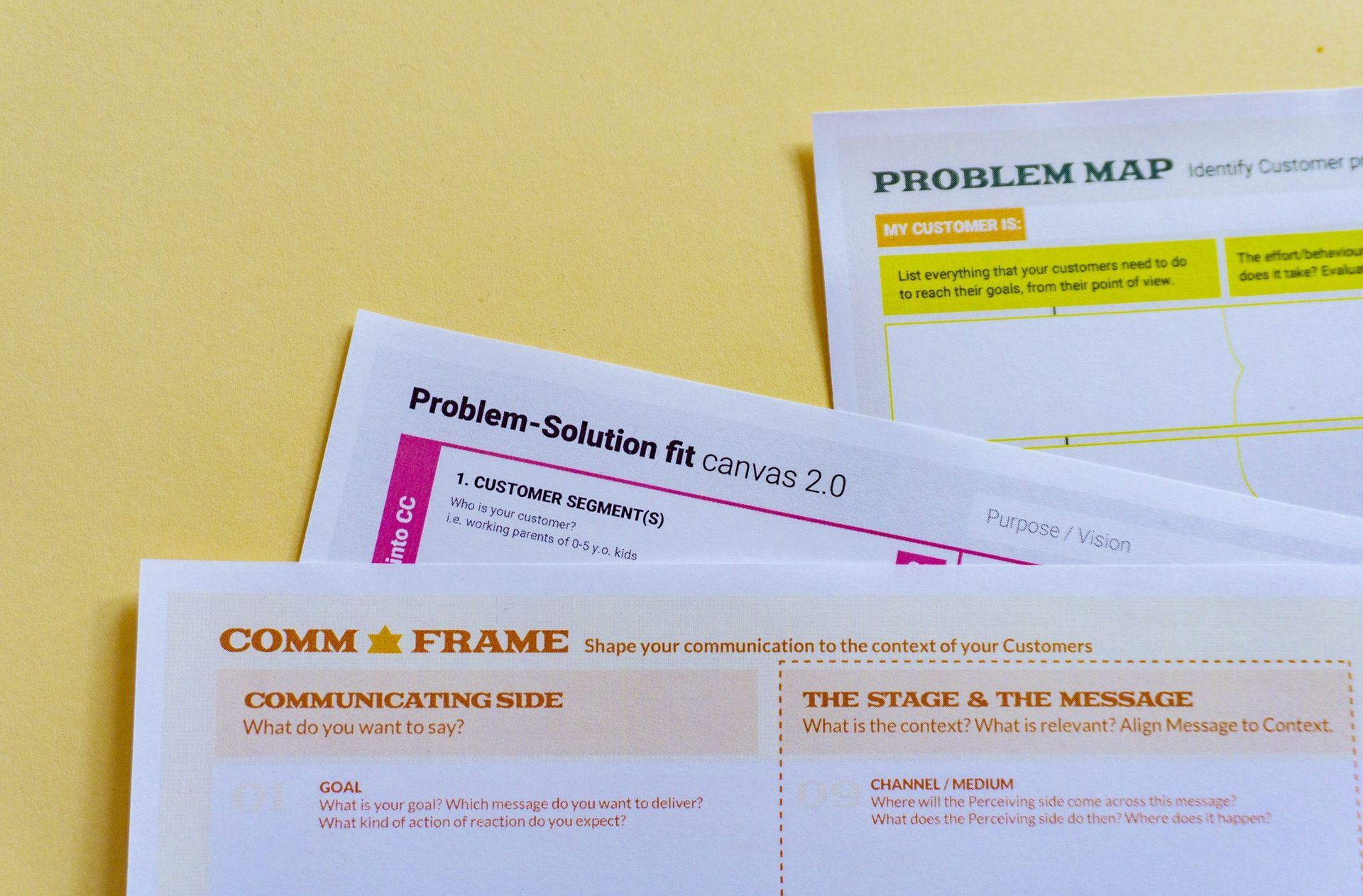
By Jordan Kelly
•
February 22, 2025
Many organisations place a heavy focus on developing a raft of heavily prescriptive templates, in the belief that this will produce comprehensive and well-thought-out bid "strategy". In other Pursuits Academy articles, I articulate, in detail, precisely why it is that quality strategy (in fact, why real “ strategy”) cannot be produced by templates. Now, in this upload, I will make the additional observation that “over-templatisation” actually de-motivates workshop participants and others looked to for strategy input. There’s an irony at play in many B2B organisations: While at the upper levels of strategy direction, someone is busy creating more templates and injecting existing templates with more fields to be filled in, the root of the problem (i.e. poor quality strategy) is the templates themselves . And it’s not only the fact that these templates (no matter how detailed) don’t produce quality (or even genuine ) strategy, it’s also that their usage fails to enthuse and compel people to avidly embrace the whole (as in, the whole of the ) strategy development process . Are You Addressing the Root of the Problem? Try this possibility on for size, as regards your own organisation: Are you too focused on making your processes more involved and more complex, when the immediate problem is actually that you’re struggling to get your client-facing personnel (i.e. business development and sales representatives) to use the existing processes/templates effectively and enthusiastically? The alternative is to understand that the mining of critical client-facing insights and information, and the subsequent formulation of bid strategy, is not – in general – well-served by templates . . . or, at least, not past a certain, still reasonably elementary, stage in the process. True strategy is fluid, and results from free-flowing (albeit tightly directed) investigative conversations that range both deep and wide . . . the direction of which cannot be determined by a template approach. Let me conclude with a (true) story from my early days specialising in this field. The Australian head office of a multinational IT giant had spent some hundreds of thousands of dollars on implementing new software that provided a range of templates – predominantly for the capture of information gleaned by BDs following any meetings they had with potential customer organisations. An Expensive White Elephant Although the use of these templates was mandated, the BDs used these minimally, if at all. (They considered them the ruination of an otherwise nice afternoon in the company of a major customer or prospect.) After months of unsuccessfully cajoling the BD team into embracing the software a little more enthusiastically, I was called in by the company . . . initially to add to their efforts to gain traction for the use of the program (which, by this stage, had turned into an expensive white elephant). I’ll cut the story short, by saying that my approach to the problem involved closely evaluating the modus operandi of the various key BD team members, in order to determine the role each was best suited to playing in the gathering and documentation of customer insights, the supplementation of these with secondary research, and the conversion of all these information types into actionable strategy. This approach worked. Why? Because (a) it reflected how real strategy is developed, (b) it inspired the team members to think through the contribution of their individual roles and make strategic use of their opportunities, and (c) it allowed each individual to operate in a manner conducive to their own personalities.

By Jordan Kelly
•
February 21, 2025
The No. 1 way to strike a consistently high win rate with your bids and high-stakes proposals is simply this: Make it a top priority to understand why you won, or why you lost, all those that came before the one you’re currently working on. Clearly, the client-delivered debrief is the most obvious way to achieve a first-hand understanding of whether and where a submission hit the mark, or whether and where it didn’t – and (also, hopefully) how it stacked up against the competition. The value of the information and insights obtained from such an exercise, however, is almost always directly proportionate to how effectively each side prepares for, and participates in, the debriefing session. The “trick” to using the debrief as your “secret weapon” in your quest to consistently pip the competition at the post, lies in extracting high-potency intelligence; frank, no-holds-barred, painstakingly detailed commentary . . . “news you can use” to mastermind quantum leaps of continuous improvement in your processes. Even when you’re already submitting winning bids. Assumptions Make Dangerous Allies Don’t let a successful bidding track record blind you to the merits of working hard to extract valuable feedback on all aspects of your most recent bid: To repeat success wilfully , you must know exactly what created it. Assumptions make dangerous allies. In my opinion, one of the greatest quotes of all time was uttered by Napoleon Bonaparte, when he said: “The greatest danger occurs at the moment of victory.” When being enlightened as to why it won, many a jubilant winning team has had its proverbial bubble burst by learning that it was a completely different factor that won it the bid, than that which it had assumed. (It goes without saying, of course, that if you’re on a losing streak you have an even greater incentive to find out all you can from a debrief, to help steer you towards success.) How to avail yourself and your team of a high-value debrief, then? Corral the Horses: You Want It from Their Mouths (Not Third-Hand) First and foremost, you want the feedback to come from “the horses’ mouths” i.e. the members of the tender evaluation panel . . . not second-hand, from personnel who weren’t directly involved in the evaluation, and who (worse still) may never had read your submission in detail. Getting the right people at the debriefing table is critical. You’ll greatly increase your chances of this by targeting your (formal) email request/s to the most senior client organisation representatives, conveying the importance, to you and your team, of the debrief. If applicable and appropriate, ensure the probity auditor of the bidding process is included in, or cc’d in on, these communications. Don’t try to achieve this objective through phone calls, or “whipped off”, informal emails. This risks downplaying the significance of your request and of the debrief per se. Don’t be timid on this point. You should (politely, of course) state that you’d appreciate the client-side debrief participants include those directly involved in the evaluation process. This transmits the message (in an acceptable manner) that you’d appreciate the client-side preparing adequately for the debrief, as you’ll be expecting accurate and detailed feedback. This latter point is particularly important. In the case of a major project, it could be four or five months post-decision before a debrief is held. Thus, the evaluators need to be prompted to refresh themselves with regard to the detail of your bid documentation. End With the Start in Mind Secondly – plan, plan, plan. To turn an old saying on its ear, when planning your own approach to the debrief, end with the start in mind. That is, set out to learn as much as you can about the strengths and weaknesses you exhibited in the current bid, in order to start out on a stronger footing with your next bidding performance. When I’m preparing a bid team to attend a submission debriefing session with one of its prospect or client organisations, I work with it to do what I’m about to recommend to you here: (1) Plan your approach and questioning outline in the same detailed manner as you’d approach preparing the outline for a bid strategy formulation workshop,. (2) Exercise both tact and strategy when framing the questions. (3) Practice “proactive” listening skills – and exhibit an open mind and broad shoulders. Let’s address these three points in turn. Mapping Out Your Approach You don’t enter into a bid strategy workshop with no prior planning whatsoever, so why would you enter into a debrief with no pre-determination of the desired result . . . and without a roadmap to exercise your optimal level of influence over the quality of output? If you’re thorough in identifying all the areas in which you want detailed feedback, chances are you’ll come up with more questions than you can ask in the time allotted for the debrief. My advice is to prioritise these in accordance with the degree of value they afford you, in terms of: (a) (if your bid lost this time) winning another similar bid or another bid with the same client, or (b) (if your bid won ) performing in a manner throughout the contract, that will ensure you of success in your project/product/service delivery, and favourable and robust positioning for future business with the client in question. Framing the Questions To derive accurate, detailed information, and the frankness of client commentary that might otherwise have proved too uncomfortable for the parties, you must frame your questions sensitively and productively. One of the most important considerations you can make in mapping out your questions, is to be cognisant that there are three categories of information in any given “debriefing” environment and the associated dynamics: 1) Conscious and willing to share. 2) Conscious and not willing to share. 3) Unconscious, so can’t share. It’s easy to get the Category 1 information. That’s what the client has prepared and has come there ready to offer. Category 2 is tricky . . . but this information is particularly valuable. Here’s how to extract it – as painlessly as possible: Minimise the evaluation team’s discomfort by framing your questions, and pre-establishing the tone of the evaluators’ responses, such that observations are delivered as constructive criticism. Make it easy and comfortable (or as comfortable as possible) for the client-side executives to speak their minds. Let's take, by way of example, the situation whereby a bid team that tabled a losing bid is dealing with one of the trickiest issues of all: whether or not they lost on price. And whether or not the client is prepared to admit it. Here's how that bid team might frame its approach in the client's debriefing session: “Obviously, when we prepare our estimates, our pricing is based on delivering the optimal result in every aspect of the project. It follows then, that in some projects there might be a connection between price and what we believe it will take to deliver that optimal result. “It would be valuable for us to understand, from your perspective, how valuable (or otherwise) you feel that extra guarantee of satisfaction is, when we’re up against someone that comes in with a lower price.” Category 3 requires a different type of prompt. In this example, the bid team is endeavouring to determine where it hit the right hot buttons and where it didn’t: “We carried out extensive background research into this project and your stakeholders’ issues, and we worked hard to pinpoint what appeared would be your top concerns and priorities. Then we worked our methodology and general approach around these. “Could you give us some specific feedback on where we were correct with our assumptions? And could you also give us some indication of where we focused on things that weren’t as important to you?” You may or may not agree with these hypothetical questions. Perhaps you’d craft them a little differently. That’s fine. The point is, it’s critical to determine the specific insights you’re after, and each of the aspects of the bid in which you want those insights, and then to frame up some questions that will draw out the most instructive answers, in the most productive manner. Testing the Answers As politically incorrect as it may be to write this, there will be times (especially in the case of a loss) when you feel you want to be “extra sure” the feedback you received was “kosher”. I’m sure I don’t need to elaborate. The way to deal with this is to find a polite and acceptable way to ask the same question from more than one angle and, preferably, to ask it of more than one of the panel members. Listening & Implementing Be sure to exhibit strong listening skills , demonstrating your appreciation of the insights being delivered and ensuring your full understanding of them (this client will now be less than impressed if your future proposals ignore the advice they’ve just imparted). And take detailed notes. The more detail you can capture from the client team’s answers, the more useful direction you can provide back to your organisation when you debrief the broader team back at home base. (You do undertake this all-important second-level de-brief, of course, don’t you? ) In conclusion: Bid teams often claim clients don’t give them the valuable answers and feedback they’d have liked. I say: The responsibility for asking quality questions is yours i.e. the bidder’s . Likewise, the responsibility for milking the most value out of the information you gather from a debrief, is yours also. Follow these fundamentals and you’ll be well ahead of the competition when it comes to positioning your organisation for a win next time (if you lost this time) or, if yours was the winning bid, a win by a larger margin of certainty next time.

By Jordan Kelly
•
February 21, 2025
A "checklist", in the context of a document, usually limits its embrace to non-subjective, cut-and-dried elements of inclusion or accuracy. However, it’s equally important – in the case of a big-ticket bid – to step back and view your content from a broader perspective, to assume nothing, and to ensure your writing style and/or structure packs a decent punch. Here are some key such ‘macro-level’ checkpoints: Does your piece reflect that you’ve followed a cohesive and well-structured, or at least well-thought-out, content plan ? Whether you’re a seasoned bid writer or a newbie, you should plan your work and stick to your plan. Check your “facts”. There’s no room for the inclusion of assumptions or the reliance upon unverified third-party statements or claims in your EOI and RFP responses. Make sure your first paragraph – as the “introduction” to your piece –is strong, punchy and provides a compelling entry point to the rest of your material. Draw out the project-specific or contract-specific relevance and meaning of anything you write. Don’t leave it to the evaluators to connect the dots. Ensure you’ve communicated the benefits associated with the features of your technology or service ( not just the features ).

By Jordan Kelly
•
February 21, 2025
Here are six absolutely fundamental, editing-stage questions to ask yourself and your team, about the draft of your Expression of Interest (EOI), Request for Proposal (RFP) or other form of bid or sales proposal: Does your proposal or submission demonstrate an in-depth understanding of the prospect’s world? Does it demonstrate that deep, multii-faceted, multi-source research was done into the (e.g. historical/political) backdrop of the procurement? Is your proposal or submission genuinely client-focused , framing all information about the bidder in the context of the client’s interest? Is your submission bold and confident in its articulation of its conclusions, but does it stop well short of arrogance? Is it authoritative yet not condescending? Does it demonstrate/substantiate all of its claims?

By Jordan Kelly
•
February 21, 2025
Here are the first five of the 10 mistakes that I have most frequently, across the course of my 12 years as a bid strategist and writer, witnessed bid teams making. Each one of these practices is, in its own right, damaging to a bid’s success. Collectively, however, they as good as guarantee that the […]

By Jordan Kelly
•
February 19, 2025
The Bard and His Pearls of Wisdom . . . As Applied to Bid Strategy Shakespeare would have made a brilliant business development operative (‘BD’) or bid strategist. As a writer, I could live and breathe the writings of Shakespeare. But what few people today appreciate is the sheer strategy behind the musings in his […]

By Jordan Kelly
•
February 18, 2025
"Primary" information is that which is obtained first-hand . . . straight "from the horse’s mouth" or direct from the source. This is the information you derive and capture from conversations with customer representatives, user group members and other stakeholders. It’s your direct observations and insights. “Secondary” information is that which you source already formed, published or otherwise documented – “ready packaged”, so to speak. It’s the policy documents, the website content, the white papers, the media coverage, the consultant’s reports (i.e. if not commissioned by you). Make extensive use of both. It is usually best to precede your primary information endeavours with collection of secondary information. This provides an informed starting point and allows you to ask quality questions of your prospective client or customer.

By Jordan Kelly
•
February 18, 2025
The best-quality submissions have one thing in common: research and other forms of preparation start early . . . long before the formal Expression of Interest or Request for Proposal is released into the marketplace. Conversely, inadequate pre-probity preparation sets the scene for a submission characterised by rushed background research (if any), as well as the disorganisation that results from waiting until the client’s always-too-short deadline is upon the bidder. The following is a set of recommendations for the research and preparation an intending bidder should conduct prior to the client’s release of the formal market call documentation. I have developed, tested and consistently employed this series of pre-probity bid management steps over the course of the past dozen years. It’s been refined now to the point where it represents a logical, comprehensive, streamlined framework – and ensures a strategy-based, high quality end-submission. Stage One : Collation and sharing of the existing information resulting from all previous prospect/client meetings and communications. Prior to the conduct of any bid strategy formulation sessions, all information gathered by business development personnel needs to be corralled, co-ordinated, verified and expanded upon. Stage Two : Initial overview strategy session with management personnel responsible for selecting external partners and bid team members. It’s critical to identify the most likely core elements of your intended approach (notwithstanding that this can, at this stage, be based only on pre-release research, communications and assumptions) before the selection of bid team participants and contributors, and before the selection of any joint venture partners, in order to ensure the assembled team is relevant to that strategy . Stage Three : Identify external partners and team management. Logical follow-on from Stage Three. Stage Four : Strategy session/s to map out an interim/likely strategy. The Pursuit Leader / Business Development operatives, Bid Strategist and Bid Manager should work closely together to identify the most strategic participants for this early and initial (pre-release) bid strategy development session (or series of sessions). The invitee list should focus tightly on those with direct client and project/contract experience , and relevant competitor knowledge , in order to ensure those participating have a valuable and specific contribution to make to the strategy development process. Stage Five : Production of a formal Interim Bid Strategy Document. This forms an early blueprint for the approach to the EOI/RFP response. It also documents a clear “to do list”, to ensure identified knowledge gaps are filled. (It needs to be recognised that although this will be based on the best information available at the time, it will be subject to any degree of change both before and after the client’s market call documentation is released.) Stage Six : Follow-through of Interim Strategy Document recommendations. The Pursuit Leader and his or her team, the Bid Strategist, and the Bid Manager must work closely together in the collection of additional information and actioning of items directed by the Interim Strategy document. This stage should include the identification of any Subject Matter Experts (SMEs) whose input may be required into any sub-strategies (flagged by the Interim Strategy document) for development. Stage Seven : Team education. The opportunity exists – while Stage Six is being conducted – to assess the broader team’s (a) project knowledge base, and (b) relevant writing competencies, and to address these issues prior to the bid production phase. Stage Eight : Second strategy session and production of "anticipated final" Strategy Document. The purpose of the second series of strategy sessions is to bring together the further information requested by the Interim Strategy document, firm up sub-strategies, and work with this new/refined input to develop the anticipated final strategy. (Clearly, if the directives of the Interim Strategy Document have not been actioned, the value of outputs from these second sessions will be negatively impacted.) This document will then form the final bid strategy blueprint, subject to its testing against the content and requirements of the actual RFP, upon release. Stage Nine : Customising of case studies and Curricula Vitae. The bid strategy blueprint in hand, an immediate start can now be made on the production of customised case studies / project data sheets, contract/project-specific CVs, along with any other supporting documentation likely to be required as part of the submission. Stage Ten : Testimonial-gathering, in accordance with Strategy Document intentions and directions. Similarly to Stage Nine, high-value testimonials should be sought from the most relevant of the bidder’s clients/customers. Stage 11 : Formulate brief for designers. As a “heads up”, if the submission will be heavy in volume, a specifically-formulated written design brief – the essence of which is distilled from the Strategy Document – should be produced for design / production personnel. This should be supplemented by an oral presentation of the essential elements of the bid strategy. Lengthy experience working directly with designers over many years has shown that the delivery of a clear, detailed and definitive design brief is essential to the design team’s development of a competent and strategic design concept proposal.

By Jordan Kelly
•
February 18, 2025
There are reasons beyond the obvious that you really don’t want to be one of those tenderers that engages in the flawed strategy of surreptitiously swapping out delivery team members for those of a lesser calibre, post-bid. But let’s start with the ‘above the surface’ reasons: Depending upon how far down the food chain you’ve […]

By Jordan Kelly
•
February 18, 2025
Some questions in a client organisation’s Request for Proposal (RFP) documentation appear to invite particularly standardised answers . . . and bidders usually give in to the temptation to cut and paste their responses from the last 17 submissions they produced. After all, how do you make the answers to such standard, black-and-white, non-subjective sections […]

By Jordan Kelly
•
February 17, 2025
Key to ensuring quality inputs to a bid strategy effort is, in turn, ensuring the relevance, sensibility and comprehensiveness of notes (and verbal accompaniments) provided by the bidder’s Business Development Managers and other front-line personnel. And the key to ensuring this relevance, sensibility and comprehensiveness is for these information-gathering parties to have first done the following: Planned their conversation outline and questions asked of the client, from the perspective of those bid team members who will ultimately shape (a) the bid strategy, (b) the proposed offering, and (c) the submission document. Reviewed their notations to ensure that any vagaries are corrected with the required clarity, that any information holes are filled adequately, and that any obvious questions have been anticipated (so that answers can be sought). Before, during and after all communication opportunities, those in these front-line, client-facing roles must be cognisant that they (and sometimes, they alone) are tasked with ferreting out critical bid-winning insights on behalf of all the various specialist roles in both the bid and delivery teams.

By Jordan Kelly
•
February 17, 2025
Unbeknownst to most of my clientele, I once completed (well, almost, just two weeks short of the finish line) an Officer Training Cadetship at Australia’s most prestigious military academy, the Royal Military College of Duntroon. One day my unit’s staff sergeant had us fall in and play “Chinese Whispers”. You know, the party game during which one person whispers a message to the person next to (or, in our case, behind) them, with that individual passing it on to the next, and so on. ( NB: In the United States, this game is apparently referred to more commonly as “Telephone” or “Gossip”.) The inaccuracies compound as the game progresses and the message is transmitted on down the line. In a party context, the purpose of the game is pure entertainment, with the final transmission rarely even remotely recognisable against the original message – and, invariably, nonsensical and hilarious. Don’t Over-Estimate Yourself However, you’d think that a unit of young, serious-minded, keen-eared officer cadets with a savage staff sergeant breathing down our necks, would do a better job of retaining the integrity of the message as he communicated it to the first cadet in the line. Not so. Years later, I recall neither the original message nor the hilarious result of its being passed down our six-man and one-woman line-up, but let’s just say it probably went something like the following. Original message: The enemy will be positioned behind the red brick building, on the right, two miles over the border line, with full combat weaponry and orders to eliminate anyone approaching from the northeast. Final version: The whales are going to die soon, so meet me behind the brick wall. Capture the Macro, the Micro, and the Minutiae What I’d like to achieve with this little story from my Army days is to have you, the all-important first point of prospective client/customer interface, understand how critical it is for you to document – clearly and in detail – the macro, the micro, and the minutiae of each meeting or other form of meaningful frontline interchange. The quality of the bid strategy (i.e. that which informs the end submission) is dependent, first and foremost, upon the accuracy and comprehensiveness of the information you derive from your communications with the client or customer. And, as you can see, the more concrete the condition in which you pass on these discoveries, observations and conclusions, the less chance they have of being diluted, misinterpreted or just plain lost in the communications chain within your organisation. Some companies have invested in software programs (often little more than basic online forms) for the capture of meeting proceedings and other customer/client dialogues. Generally, I’m not in favour of these. Certainly, the ones I’ve been exposed to, in effect, discourage any real depth or thought development by the business development (BD) operative, salesperson or other client-interfacing individual. However, they’re vastly more preferable than the common alternative: nothing. Urgency is Key to Comprehensiveness A key to producing the most valuable ( read: comprehensive, detailed and accurate ) notes following any meeting or communication is to do it as soon as you possibly can after that event. And I do mean ASAP. On one particularly business-critical (i.e. for my client) pursuit in which I took the role of bid strategist, I had the two-person tag team appointed to meet with the client, call me from their parked car immediately they left that meeting - dictating to me the content and conclusions of the interchange, while it was fresh in their minds. This was the difference between seven pages of invaluable client and competitor insights versus the likely alternative: half a page of sketchy bullet points produced later that week from a greatly diluted memory of the one-time-only hour-and-a-half meeting. Those seven pages of sharply focused, technicolour detail provided the foundation of the bid strategy, and the guideposts for considerable further research – research that led to unveiling nearly every other competitor’s likely strategy and related “USP” (Unique Selling Point). When added to the insights the client representatives gave us into their world, we were able to formulate an offering that overcame almost every major challenge (which were numerous) that the client organisation either had or perceived itself to be struggling with. What’s more we overcame these with elements that we were reasonably confident no competitor either could, or possessed sufficient insights to be able to, table. A Simple Pre-Planning Practice The point I’d like to return to here, is that producing such a high-quality bid strategy, and formulating such an on-the-money offering, was only possible due to the quality of the coalface, primary information captures. In addition to developing a strong sense of urgency for documenting the proceeds of a client meeting, I’ll make one further recommendation: For quality of insight and information capture, pre-format a simple notepad with a list of headings – each heading representing an area of questioning and “drill down” that you intend to pursue with the client. Ideally, the client won’t be phased by your request for permission to jot down basic notes during your discussion. The headings and subheadings in such a pre-formatted capture document will act as valuable prompts when you go to expand, after the meeting, on the detail of your in-situ jottings.

By Jordan Kelly
•
February 14, 2025
You’ll notice that – in all relevant Pursuits Academy content – I take the opportunity to remind business development operatives, bid strategists and bid managers of the absolute criticality, of producing a formal, detailed and comprehensive bid strategy document to inform the content of the submission and to guide the individual section authors. I’m often asked, “Should this be a ‘big picture’ thematic document, or a join-the-dots, able-to-be-cut-and-pasted-into-the-response type of resource?” My answer: Ideally, it will be both. Certainly, though, it will be the former. While it is acknowledged that some team members would like such a document to comprise fully self-contained, “cut and paste-able” components, it often serves a better purpose to simply lay out the document under headings likely to align with the client’s required response format. This allows each contributing author to pluck and paste in support of his or her own section/case-being-made. This way the author is not steamrolled into following what may be a too-narrow content outline. Additionally, a bid strategy must first be grasped holistically , so that its component parts can be communicated with full impact and relevance to the client’s all-important “big picture”.

By Jordan Kelly
•
February 12, 2025
Next time you’re trying to move a stalled deal (i.e. one that’s not subject to the release of a formal tendering process) towards a close, pose this question: “What can we do to make this work for you?” This simple question eliminates the futility of trying to figure out what you need to do or say to bag the business. Conversely, it gets the prospect to tell you exactly what their organisation needs to be assured of, or be offered, to be convinced to move forward conclusively. Excerpted and adapted from source material: Charles, Marc, “10 Words to Close Any Sale,” Early to Rise.

By Jordan Kelly
•
February 12, 2025
I’ve written copiously about the advantage corporations create for small and medium-sized enterprises when these larger organisations exercise an arrogant attitude – as, unfortunately for them, they so often do. In this article, I’ll give you a window of insight into how arrogance shows up in bid documentation tabled by arrogant B2B enterprises. It comes down to this: If those frontline personnel responsible for a company’s sales think they already know it all then, in general, they’re unlikely to listen with the required intensity to pick up the vital clues that will help them differentiate their offering from those of their competitors. And they’re unlikely to have developed sufficient understanding of the client or customer organisation to feed back to their bid teams the quality of information and the depth of detail required to produce a genuinely client-centric Expression of Interest, Request for Tender, or other form of proposal. So let’s see what the end-product of a know-it-all approach looks like in practice. For the purpose, let’s discuss the most valuable piece of proposal real estate: the Executive Summary . There are three fundamental flaws that show up consistently in this all-important front piece. Each is the product of an insufficient appreciation of the client or customer organisation’s bigger picture, its priorities, its concerns – and all the other elements of understanding that would have resulted from competent information-gathering and a humble mindset. Fundamental Flaw No. 1: ‘We, Our, Us’ Most Executive Summaries I see are self-focused to some degree. Some to a very considerable degree. I once evaluated a bid, the Executive Summary of which featured the seller’s name no less than 17 times in a short series of introductory paragraphs. You might laugh at that, but a large percentage of Executive Summaries end up with the seller’s or service provider’s name (or “We”, “Our” and “Us”) at the beginning of most paragraphs. Other Executive Summaries start out talking about the client, but only as a prelude to a monologue about their own capabilities and credentials . . . often not taking the time to fully draw out the client-specific, contract-specific, or project-specific relevance of these. Fundamental Flaw No. 2: A No-WIIFM ‘Win Theme’ Many corporate bid teams wax on about “win themes”. Yet their “win themes” are usually all about themselves, their product or service, and what makes them so superior. And all in the most self-focused, self-congratulatory, unsubstantiated manner. What they fail to recognise is that the interest a prospective client or customer has in any service provider or product supplier, is directly proportionate to how relevant that provider or supplier has made itself to that client or customer – the “What’s In It For Me” factor. To draw that relevance requires listening skills. And to be a truly effective listener requires an open mind and an attitude of humility. And so results an Executive Summary – and often, in fact, a whole proposal – that is peppered with empty “brochureware” statements such as “best in class”, “world’s best practice”, or “cutting-edge technology” . . . and precious little clue as to what value this self-proclaimed grandeur brings to the client organisation in its specific set of circumstances. Fundamental Flaw No. 3: Fluffing Out with Filler Copy “We are excited by the opportunity to embark on this project with XYZ Corporation, and we look forward to bringing unparalleled skill and experience to drive your objectives forward.” Or, how to spin 29 words out of nothing to fill space at the beginning of an Executive Summary. Do executives and bid teams really write this sort of filler material in all-important pieces like the Executive Summary? Yes. And, yet again, they do it because they haven’t listened to the client, asked quality questions, and formulated a bid strategy from a position of true understanding of that customer’s world. If, in fact, they have formulated anything that represents a genuine bid strategy at all – since they may have considered such an activity expedient, given their self-perceived knowledge of the client or customer. Such are the very common weaknesses of large and supposedly highly skilled corporate bid teams. And such are the competitive advantages of the nimble and more attitudinally flexible SME that recognises the value of assuming nothing, taking the time to conduct quality research, crafting high-value questions, adopting an attitude of humility and employing strong listening skills, then taking detailed heed of the answers and using these as the foundation of a customer-centric bid strategy. Even if that SME’s offering were no better in any tangible regard than its larger competitors’, all else being equal, its proposal would stand an excellent chance of hitting enough hot buttons to pip the bigger guys at the post.

By Jordan Kelly
•
February 12, 2025
Five tips for cementing your company, your service or product, and yourself in a prospect’s mind, long before the formal bid phase: 1. Source credible, neutral information; content from reliable, independent sources. Buyers value pertinent information that’s truthful and unbiased. 2. Seek out research and benchmarks. Give them solid, independent data they can use to make a case to their stakeholders. 3. Curate it carefully. Don’t do a data dump. It won’t impress them. It risks annoying them, with otherwise valuable material. Show them the full extent of your intelligence by excerpting and quoting in accordance with their needs and issues. 4. Give them news they can use: tips, techniques, independent evaluations, feedback from users that you’ve found elsewhere than your own marketing department. 5. Source case studies that feature peer organisations making similar procurement decisions or employing similar procurement methodologies. Help buyers see products and solutions in the context in which they will be rolled out in their own environments. It’s about showing your integrity, your diligence, and your understanding of their world, their vision, their experiences, and their issues.

By Jordan Kelly
•
February 11, 2025
Many contributors to Expression of Interest (EOI) and Request for Proposal (RFP) responses are still writing in an overly-dry, benefit-burying "academic" style. Or, at the completely opposite end of the scale, doing an outstandingly amateur job of mimicking advertising copywriters. Or worse still, their writing style is a hybrid of the two. This is especially true of the civil engineering sector, where many of the contributors to a submission are engineers, or the like, by profession. They’ve been taught to write in an “academic” style and it’s all they know. So they either stay in that mold when authoring a bid section, or they think it necessary to slip into hard-core sales-speak. They don’t understand the vast space between the two extreme and undesirable ends of the spectrum. I’ve been pointing this out in my evaluations of client documentation for years, as a priority issue, but often, little changes. Why? Primarily because, as far as corporate bid teams go, as fast as that problem is solved in a team, new un-initiates are rolled into subsequent bids. It’s like sweeping back a mudslide with a hand broom. What are the keys to taking raw information and turning it into an authoritative, highly readable, conclusive and compelling section response? First, the basics. (Let’s concern ourselves with “style” after we’ve nailed these): 1. First and foremost – answer the question. If capitals in website copy didn’t come across as “shouting”, I’d constantly find myself writing “answer the question” in bold, capitals, underscored, with asterisks on either side, across the bid documentation I evaluate. Seriously. Getting carried away with a sales spiel or thinking a tender evaluator won’t notice that you’ve smoked over the inability to satisfy the intention of the specific question both lead to the same result: Minimised points for that section. And massive erosion of the overall credibility of the submission. 2. Have and USE A guiding bid strategy document. Most organisations are still doing it: Expecting their section authors or dedicated bid writers (whether in-house or external) to produce copy without sufficient guidance by way of an overall, underlying strategy. Many organisations are hiring in facilitators (who are rarely qualified to call themselves anything remotely resembling “strategists”) who produce a plethora of overly-basic, group-think-driven assumptions in key point form on butcher’s paper. The “war room” walls are then papered with these “outputs” and the entrapped-within writers are left to convert this, for themselves, into some form of guiding strategy. 3. Have section authors plan out their content, in order of intended fact roll-out, and submit this to the appropriate party before letting them commence writing. If you fail to implement this policy, then it’s almost guaranteed that those section authors who are not writers by profession, and/or have had no training in writing skills, will launch into a stream-of-consciousness outflow of directionless sentences and paragraphs. There will likely be a disconnectedness between paragraphs, and a lack of logical progression to the roll-out of facts. Think I’m being uncharitable? Produce as many evaluations as I have in the past 18 years and then challenge me on that. Now . . . having set the parameters and the process for a strategy-guided response, a logical flow, and a document that actually answers the client’s question/s, let’s look at what makes a piece of bid-writing compelling : 4. Go a quantum step further than simply applying the standard "Features vs Benefits" admonition. The “state the benefit not the feature” admonition has long since become commonplace. But there’s a special way to apply it in bids . . . because, in a bid, you know the specific reader of the document. It’s not a generic brochure with a multi-target audience. Two points to be made here, and they both circle right back to diligence and thoroughness in the strategy development phase: a) The deeper the understanding of the potential client and every facet of its contract/project and overall operating environment, the more immediately relevant these benefits can be made to the bid in question. b) It’s not the writer’s job to identify these alignments. It’s the strategist’s job. And it’s the strategist’s job to get them into the guiding strategy document . It’s only the writer’s job to articulate them, and to do so in a compelling manner. 5. Now, get clever with your copywriting skills. Here are some of the “principles of the pros”. First, understand the extent to which the nature of the piece you’re working on and the audience you’re writing to, allows you to write in a conversational tone. Second, grab the evaluator’s attention by leading with the most compelling component of your section response. The rest of your answer and your facts should hang off that, developing logically from that as your entry point. Keep your focus firmly on the reader (in this case, the potential client or customer) before turning to your own strengths and offering. In this way, you will have explained how everything you’re about to roll out about you , is relevant to them , their pain points, their sensitivities, their needs and their desires, and the specific boxes they have to tick with this particular procurement. Weave in the key factors that of differentiation from the competition and make these immediately relevant to the potential client or customer. Establish your credibility with relevant facts. Substantiate every claim you make, using quantified proof points wherever these are available. Don’t simply expect the evaluator to believe your claims. That’s an arrogant and presumptuous way to write. I call it “brochureware”. Find a way to quantify the value of your offering. The starting point for this is to identify (through research, not assumption) precisely what constitutes “value” in the eyes of the potential client.
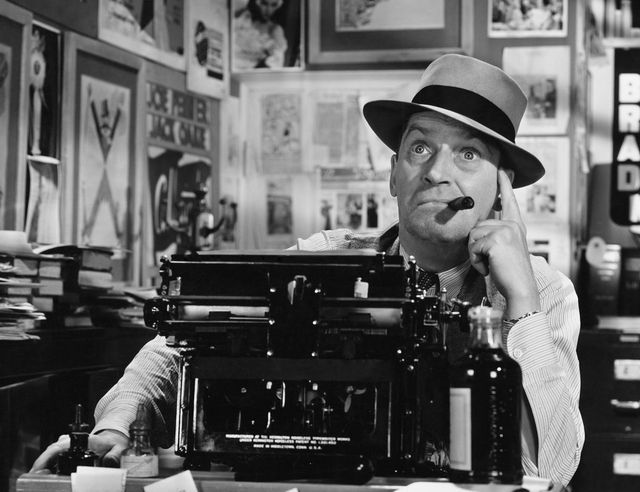
By Jordan Kelly
•
February 10, 2025
To a very large degree, the effectiveness of the bid writer’s output is only ever going to be as good as the quality of the strategist’s product. The writer’s ability to produce a truly client-focused and compelling final product is contingent upon your having first formulated a solid bid strategy . . . and having produced a comprehensive, solid, written guiding blueprint. Tip No. 1 – Clarity of Strategy A clear strategy paves the way for clear articulation. As in strategy, so in articulation. Never put pen to paper on an important, high-value submission without first producing a documented blueprint of your substance and intended content. Tip No. 2 – Benefits vs Features Think and write in terms of benefits, more so than features. Be cognisant, therefore, of the distinction between benefits and features i.e. the benefit results from the feature. Join the dots for the client organisation and its evaluation team members; don’t leave them to extrapolate the benefit from the feature for themselves. (A rider here: If you’re selling to engineers or other “technical” buyers, don’t omit features – but do make sure you explain their benefits in the context of the project or procurement in question.) Tip No. 3 – Straight Answers Answer the question. Don’t devolve into evasive writing because you don’t know how to answer a question, or because you have insufficient material to address it with substance. Have the integrity to correct the problem at its source, seeking out the information you need, or going back into the planning room if your content is lacking as a result of an incomplete or incoherent strategy. Tip No. 4 – Substantiate Your Claims Don’t let a lack of substantiation erode your credibility. One of the most common flaws in Expression of Interest (EOI) and Request for Proposal (RFP) responses is the proliferation of “empty” claims – claims made with no attempt to provide specific points of proof or any other form of substantiation. Being guided by a formal, written strategy is the first step in ensuring against an empty, substance-less submission. Tip No. 5 – Process, Don’t Parrot Think for yourself. You’ve heard the adage, “A consultant is someone who asks for your watch, tells you the time and charges you for it.” A similar concept underlies the common tendency to either repeat verbatim, or to minimally re-phrase, large tracts of the client’s own EOI or RFP documentation. That demonstrates neither any conduct of your own research, nor employment of your own thought processes.

By Jordan Kelly
•
February 10, 2025
It is, has always been, and always will be, my firm belief (and my consistently demonstrated experience) that the concept of “strategy” and the concept of a “template” are, at root, in direct conflict with each other. Strategy is the output of deep, analytical and lateral thinking. By contrast, by their very nature, templates produce shallow (what I call “inch deep”) thinking. It is not possible for it to be otherwise – regardless of the detail and complexity that may be built into any given template – because strategic thinking is not , by its very nature , linear. Past a very shallow level, templates cannot effectively or efficiently direct the non-linear, nimble and fluid thinking required to produce an optimal, competitively superior strategy. There Is An Exception Templates, however, do have a role to play when a bid team doesn’t have a genuine strategist to lead it in its formulation of strategy. BUT (critical qualifier follows) . . . the value of templates, even in that scenario, is only as “set sail” guideposts and final check points. Templates have no value as a singular and definitive tool for strategy formulation; they certainly do not represent a replacement for the deeply neural-driven, multi-layered thinking that produces a well-thought-out, detailed, well-knitted-together, comprehensive strategy. The current trend towards making templates more prescriptive in an attempt to raise the quality of bid strategy outputs is, in fact, counterproductive. It exacerbates a core problem: That current bid strategy sessions don’t take the investigation and think tank process either sufficiently wide or sufficiently deep ( width often being dictated by the findings of the depth of analysis, and thus not able to be predicted in a template). At best , injecting further detail requirements into templates risks directing discussions and inputs down an artificial path i.e. a path that may not lead to the optimal end result in terms of strategy. In my opinion, this is one of the primary factors contributing to the production of supplier-centric (versus genuinely client-focused) submissions and their largely “brochureware” content. In the absence of the optimum strategy, or at the very least simply a quality strategy, the content of the ultimate submission is left, in large part, to the auspices of the individual section authors. And the result of that can - logically - be nothing more than a patchwork quilt of opinions and assumptions.

By Jordan Kelly
•
February 9, 2025
Whenever I start working with a company, the first thing its client-facing executives invariably tell me is how well they know the organisation they have submitted – or are about to submit – their latest bid to. But here’s the interesting thing: When I look at their bid documentation, very little of this supposed knowledge comes through . . . even in key, “qualitative” pieces like the Executive Summary. Here’s the reality for most bidders: For all their “confidence” over the quality of research supposedly conducted into, along with their confidence over the quality of the organisation’s relationship with, the prospective client – it doesn’t show up in what they present to those clients. Why not? There are three critical steps to making sure what you know about a client and its procurement not only informs your Expression of Interest (EOI) and Request for Proposal (RFP) responses, but that it wins them for you. Note: Each of these three steps requires your Business Development (BD) and other client-facing executives to work closely with your bid production team and writers to ensure you’re getting key intermediary processes right. The Concept Is Simple but Executing It Isn’t These three steps are simple in principle – but executing and bringing them all together is often less than easy. In summary, the three processes are: 1. Doing the right research and asking the right questions. There are, in turn, three critical keys to asking the right questions. They are: Thorough and intelligent prior research (to enable strategic question planning); Quick-mindedness (to know where to take the line of questioning from there) and tenacity (to follow that line all the way through), and Listening skills par excellence (to hear both the content of the client’s answers and the underlying concerns and motivators). 2. Capturing the resultant information effectively and bringing it ‘home’ to the bid team to inform the bid strategy. Let me say here that I have never yet seen the use of templates and software result in deep and meaningful (or any other definition of effective) information capture. These generally produce surface-level, “one-sentence per field” or sketchy bullet-pointed information at best. They’re also considered an embuggerance by the BDs and salespeople . . . a post-event ruination of an otherwise enjoyable client interface. To whatever extent it is possible to take at least keyword written notes during a client interface, this is greatly preferable. These should then be fleshed out at the earliest possible opportunity (in the client’s car park, even), to minimise the erosion of remembered points and detail. 3. Converting that raw information into intelligence. There is a common misnomer in use in this field: it’s the use of “information” as synonymous with “intelligence”. Information and intelligence are not the same thing. Information becomes intelligence only when it is taken apart, considered and processed in such a way that it becomes meaningful in the specific context of the pursuit or bid in question. Unprocessed “information” is nothing more than raw data. One of the classic approaches to converting “information” into “intelligence” is to take a piece of data and ask, “So What?” i.e. in terms of the pursuit in question. The problem is, most strategists and their workshop participants don’t dig down deep enough: The answer to a well-asked “So What?” will, more often than not, lead to another question . . . and that question will most likely be a quality question . In turn, the answer to that question must be found – or at least the best possible assumption made. Thus, the process of converting information into intelligence has a number of layers, the number of which is not determinable from the outset. And the process of drilling down through those layers is most certainly not usefully guided by any form of “template” (although that’s the standard approach). While the above is little more than a basic outline of the overall process, conduct these steps thoroughly and competently, and you’re light years ahead of most of the big-ticket bidders out there today.

By Jordan Kelly
•
February 7, 2025
In the case of large and complex bids with numerous contributing subject matter experts, produce writing guides for the major sections of your Expression of Interest (EOI) or Request for Proposal (RFP) response. Here are the basic steps: Start each writing guide with an overview of your overarching bid strategy. Then lift out all the elements of your bid strategy that relate to the section for which you’re producing the writing guide. Arrange this information in an order that reflects the client’s EOI or RFP structure and questions. Then provide any elaboration or further logic/tips for the writer/s of that section. Your aim is to make the task of authoring their sections a paint-by-numbers exercise for your contributing authors. If you yourself are a competent writer, you may go as far as producing tracts that the writer’s guide user/s can cut and paste into their own section response/s.

By Jordan Kelly
•
February 6, 2025
Often under-estimated, is the importance of capturing – in detail – both the content and conclusion of conversations with the prospective client organisation’s representatives. The more socially-minded, talkative business development and sales operatives often feel it unnecessary to capture all the components and intricacies of discussions. Yet, if it was a well-planned and quality conversation, the majority of its content – if documented – stands to be of considerable value to the bid team subsequently tasked with formulating a bid strategy. At the least , it will provide the bid team with an insight into the client’s thought processes as these crystalised themselves during the course of the conversation. And at best , it will reveal the client organisation’s concerns and desires in detail, along with the reasons that organisation’s representatives hold these desires and have these concerns. These insights offer valuable signposts for a bid team, in that they (a) potentially point to the offerings that will satisfy these desires, and (b) help identify the strengths and strategies that the bidder can table to mitigate any risks the client perceives.

By Jordan Kelly
•
February 6, 2025
When an organisation’s leadership looks within for bottom-line improvement potential, it should – arguably – look first to its sales and business development teams. From my observations, something basic is too often missing. That “something” is the alignment of personalities and sales modus operandi with the nature of the product or service to be sold. In many organisations, there appears scant appreciation of the real skill set of a genuinely peak-performing salesperson or business development (“BD”) operative. With their unrealistic expectation that two generally opposing personality characteristics can be found in one person, most companies in high-value product – and particularly, service – sectors set the scene for a half-performance by a BD right there at the hiring stage. Recruiters and their clients expect of BDs the personality, street smarts and sociability to “oil the wheels” of a relationship, along with the thick skin to take the rejection that also comes with the territory. At the same time, they expect him or her to possess the sensitivity to read and intuit the client, customer or project owner, along with the tenacity, inquisitiveness, logic, information-ordering, analytical and strategic thinking skills to comprehend that organisation’s bigger picture, and to identify a competitively superior and profitable solution. Inquisitiveness, Tenacity, Logic & Strategic Thinking Ability It’s a big ask of an individual. There’s the odd multi-talented superstar, but they’re rare. And in their absence, most companies take the honed social skills offering over the deep thinker. I can cite the following example in which an established client of mine, acting on some level of recognition of this issue, called me in to perform the tasks they would have assigned to a BD of the latter variety, if they’d had one. It went like this: One of Australia’s largest construction sector “tier ones” wanted to break into the highly coveted Defence market. It was a sector they’d not only neglected for at least half a decade but also one in which they had turned out a less-than-stellar project result prior to that. The Australian Defence market was gearing up to enjoy some large and prestigious projects, and my client’s competitors had the majority toe-hold. To say the least, my client was coming from a long-shot and long-rusty position; the immediate priority was to understand the uncompromising world of Defence procurement, along with the characteristics and imperatives of the projects for which the company was qualified and wished to bid. I investigated the status quo, and formulated a detailed, step-by-step strategy for the company to follow in achieving its desired turnaround image and performance with this audience. I also produced a detailed research piece and strategy for a flagship Defence project due to come to market within a year or two of that time, a project the company went on to win resoundingly. The moral of the story lies in the asking of the question, “What if my client organisation had given that responsibility to any of the ‘wheel-oiler only’ BD types?” Dysfunctional Communication Channels The second issue leaders need to cast their eyes downward and notice is the often missing or dysfunctional communication channels from BDs back into the organisation – whether those links should be with bid team managers and members, subject matter specialists, or contract and procurement people. Put simply, companies aren’t placing sufficient emphasis on the BD’s performance as a conduit of quality client or customer intelligence. From my vantage point as a strategist in the pursuit arena, I can see that quality information isn’t being gathered to start with. Even less information of any real value is being conveyed back to the critical points within the organisation, to recipients who could analyse that information and feed it into the strategy formulation process, if one existed. Which it rarely does. Some organisations, recognising at least the information-gathering and capturing component of the problem, hire in consultants or implement software-based document-and-share systems in an attempt to address the issue. I haven’t seen many work particularly well. In a non-infrastructure example, one global IT corporation I consulted to (a company that placed exclusive value on wheel-oiling personality values in its BDs) endeavoured to solve this problem with a hideously expensive software program. The BDs resisted it like the plague. To them, there was nothing more boring than returning from a nice long lunch with a client or prospect and having to fill in a form that required them to remember answers to questions they probably hadn’t asked. Consultants were brought in, to no avail. Desperate to justify the expenditure, management resorted to begging, cajoling and later mandating the system’s use. It remained, at best, an exercise that generated template-value, inch-deep information and little in the way of genuine strategic insights. A team of BDs out of the analytical, research-oriented and strategic thinking mould would have generated valuable information with or without a software tool. Do You Know What A ‘Whole-of-Organisation’ Approach Looks Like? The moral of that particular story is that, try as you might, you can’t make a square-peg operative work effectively in a round-hole environment, even with the use of expensive software or the employment of impressively-credentialed consultants. If an organisation were in a position where it was forced to choose between hiring a high-energy, sharp-talking socialiser and a deep-thinking, detail-conscious strategic thinker for a BD role, my advice would be – assuming the latter possesses at least a decent and workable personality – to opt for the thinker. We’re living in a new world that calls for new skills, and his or her skill set is among them. This new world of intense competition and markedly increased customer or client expectation is one that also calls for a genuinely “whole-of-organisation” approach – and a clearer appreciation of what that actually looks like in practice. To the extent that a sales or business development team resists a culture shift to this more analytical, more strategic, more communicative and unified approach, it prevents the organisation from reaching its full potential. And the leader that allows his or her company to stagnate in this manner in these fast-moving, fast-changing times, does so to the very great peril of that organisation.

By Jordan Kelly
•
February 5, 2025
When preparing to send your section authors and subject matter experts off to begin their respective writing tasks, check and ensure the following: Whether a seasoned bid writer or a newbie, check that each has planned out his or her sections out before embarking on each section. That each has adhered to the plan you overviewed with him or her for the content of his or her section. That each has checked his or her “facts”. That each has substantiated any claim he or she has made. That each has made his or her first paragraph – as the “introduction” to their piece – strong and punchy, and that this “intro” paragraph provides a compelling entry point to the rest of his or her section. That each has drawn out the project-specific or contract-specific relevance and meaning of anything they have written. They should be aiming to do as much of the evaluators’ thinking for them, as possible. That each has communicated the benefits associated with the features of the technology or service ( not just the features). As you conduct these initial and progressive checks, assemble for yourself a helicopter view as to how consistently and seamlessly the various sections fit together (or not), and whether they are all in the same degree of alignment with the overarching bid strategy guidance document.

By Jordan Kelly
•
February 5, 2025
One of the less tangible, less immediately "visible" reasons for the loss of either a new-business pursuit, or an existing account, is a misalignment between organisational cultures. I’ve seen this happen on a number of occasions. One that springs colorfully to mind involved an SME client, quite some years ago: A sizeable print management firm was pursuing an account with the Australian operations of a large consumer goods multinational. This was a big-ticket opportunity with print requirements that included high-volume direct mail campaign activity. The business development operative (‘BD’) on this account had, for over a year, been aggressively endeavouring to win over the account from a competitor. Each time he’d gotten close to potentially consummating the deal, however, this potential client appeared to back off. Finally, he’d moved the relationship to the stage where a serious, formal proposal had been requested of him . . . the point at which he contacted me. When the Client’s Psychology Differs from Yours Conducting a detailed interview with this BD to understand the client’s psychology, it became clear to me that the BD’s, and the print management firm’s, aggressive and gung ho culture was at complete loggerheads with the far softer, more relationship-respecting modus operandi of the client organisation. It didn’t take me long to work out from an analysis of the historical dialogue that there was, in fact, no lack of interest in the service and other aspects of this provider’s offer. Rather, there was push-back based on this BD’s manner and approach. He didn’t see it. Not only was he oblivious to it, he advised me that – when I’d produced the proposal he was tasking me with – he intended to brandish it forcefully before the client representative with an ultimatum that they make a decision forthwith or . . . well, the rest of the intended statement was quite colorful. With some considerable persuasive effort, I managed to convince him not to take this stance. I suggested that, instead, he recognise the nature of the corporate culture he was dealing with and take a far more empathetic approach. Long story short: A little bit of “empathy” and a couple of weeks’ more patience on the BD’s part, and he bagged a new, $20m per annum account for his employer. The moral of the story is this: The Client Knows . . . Either Consciously or Subconsciously When pursuing any type of account, project, implementation, or other form of deal that requires your people to work closely with the client organisation, take culture seriously. Even if the potential client doesn’t consciously recognise the reason for any resistance on their part, he or she will – at a gut level – detect cultural misalignment. And even if you do win the deal, a poor cultural match has the potential to be, at best, a constant challenge in the ensuing relationship. At worst, it has the potential to create disaster. Here are five steps you can take in the event that you sense a potential cultural mismatch: 5 Steps for Averting or Dealing with A Cultural Mismatch Determine the degree of mismatch. Determine whether or not this has, or may, cause misalignment in more tangible ways as the relationship progresses. If, given consideration of these facts, you decide to press ahead, map out a strategy for addressing and – to the greatest extent possible – overcoming the mismatch. Where possible, make the elements of your plan measurable by, for example, formulating strategic Key Performance Indicators (KPIs). Recognise that this will be an issue that needs constant monitoring throughout the life of the project or contract. Be upfront with the client about your plans and efforts. Again, you’re probably only kidding yourself if you think they’re unaware of the cultural misalignment. Far better that you demonstrate your awareness and your proactive approach to ensuring a successful working relationship.

By Jordan Kelly
•
February 4, 2025
Apparently, before important business meetings, Aristotle Onassis used to stand alone – in the wee small hours of the morning – on the deck of his yacht, going over and over anything that could go wrong during the proceedings. To take a critical pursuit or bidding perspective on this obviously productive habit, we might think of this as a debrief-in-reverse. Here’s a checklist to prompt you as you mind-map these out ahead of time. Get together with any colleagues you’ll be attending the meeting in question with, and ask yourselves: What if, despite our best efforts, we find we’re not meeting with the optimum representatives of the client or customer organisation? What if there’s been some recent development that the client assumes we know about, and we don’t? What if there’s something the client-side considers fundamental that we haven’t picked up on? What if the client-side representatives have a negative impression of our company, product or service? Worse still, what if they come in from left field with something that’s happened that we don’t know about? What if they’ve had an experience with us or our product of which we haven’t become aware? What if the client asks something about our product we can’t answer? What if the procurement timeframe is significantly different than we have been given to believe? IMPORTANT: Anticipating what could go wrong ahead of time is key to preparing more strategically for the meeting, to greatly reduce the chances of such outcomes. However, it’s always best to expect the unexpected, in addition to thorough preparation.

By Jordan Kelly
•
February 4, 2025
In ‘5 Tips to Sharpen Your Bid-Writing’ , I wrote about the importance of a having clear and documented bid strategy, focusing on benefits, answering the client’s questions , substantiating your claims , and avoiding consultant-style parroting . These considerations all, in one way or another, relate back to effectiveness in the strategy planning stage. That is, you can’t expect to execute these tips successfully unless comprehensive research and thinking has taken place beforehand. My next lot of tips relate to the writing function per se . Tip No. 6 – Client Focus vs Supplier-centrism Be client-focused not only in your content (i.e. as above, this relies on a solid bid strategy), but also in your writing . If and whenever possible, your choice of opening words should let the evaluators know that your answer and information is going to be framed in the context of the client organisation’s interest, its needs, its project / account /contract, its priorities, and its concerns. Then keep the focus squarely on the client. Don’t revert to an organisationally self-centric tone. Tip No. 7 – Steer Clear of Hot Air & Hype Avoid the temptation to slip into sales-speak. Don’t be tempted to go into marketing copywriter mode. It’s not required. Worse, you’ll come across as an amateur, if copywriting isn’t your day job. For the most part, write as you would speak. It’s the most readable way to write. If your writing is natural, informal and unstilted, that is in fact what you are doing: You’re speaking to the client. You’re just doing it through the written word. So don’t out-clever yourself by falling into the mistaken mindset that you need to be a creative writer to write bids. In fact, trying to be creative or “salesy” is what brings a submission down. It’s about getting the basic content correct and complete, then simply making sure it progresses logically and reads sensibly. Tip No. 8 – Avoid the ‘Cut & Paste’ Trap Do NOT “cut-and-paste” from your company’s policies and procedures manual or corporate / product marketing materials. Give the evaluators more credit than to fall for thinking this is original content. Tip No. 9 – Be Wary of the Template Trap Similarly to the above, don’t rely on templates and text from previous submissions. Apart from the obvious scope for mistakes, when you cut-and-paste you’re not exactly working with a genuine client-centric focus. That is, the focus of the copy in question is not this particular client . . . at best, it’s any client. Tip No. 10 – External Impressions Read your finished piece out loud . . . to someone else. Read your material aloud to a disinterested party. You’ll avail yourself of the invaluable phenomenon of hearing your writing through that person’s ears. So much the better that they have no knowledge of the topic; you’ll quickly ascertain whether or not your piece makes sense to the common reader or other non-technical audience.

By Jordan Kelly
•
February 4, 2025
A BIG mistake I see corporations and their sales teams making at the point of entering into a bid, is doing so with an unrealistically positive perspective of the way in which their company and its product or service is viewed within the customer organisation. Sometimes, this positive attitude crosses the line and becomes full-strength arrogance. Conversely, assuming nothing and entering into both the process and all communications with the open-mindedness that results from humility is a far better way to lay the foundations for success. Couple that with being realistic in every facet of the potential deal. My objective in this article is to draw your attention to – and show you how to avoid – the primary ways in which sales executives tend to shoot themselves in the foot when they bid for key accounts and contracts. The Eternally Optimistic Sales Person To a very large degree, the optimistic, “positive thinking” nature of most sales executives makes them their own worst enemies when it come to the process of developing bid strategy and producing EOI / RFP / RFT responses. Sales is a tough business. And selling is a tough career. One of the most enduring fears of the human ego is rejection, and a salesperson gets lots of it – usually on a daily basis. A positive personality is a vital survival mechanism . . . which is probably precisely why the profession attracts people with a naturally optimistic outlook. The problem is that, as a result of this disposition, his or her internal radar usually skips straight over anything negative (which, from this point on, shall be seen as critical clues in developing winning bid strategy) and blips only at signs of how much the customer loves them, their company and their product. Because the sales force and their other team mates out in the trenches are the only feedback channel the company has in its continual quest to win and keep new customers or win new business from existing customers, a skewed perspective more often than not results. This is, ultimately, far from helpful. Arrogance is Thine Enemy Let’s have a frank discussion about the distinction between “arrogance” and “confidence”. Many BDs and sales executives dismiss arrogance ( particularly arrogance within their own organisation ) as confidence. Blurring this distinction can be commercially lethal. An arrogant attitude or persona on the part of a BD/salesperson, a sales team or (as is often the case) an entire organisation, projects any or all of the following messages to a customer: "We know what you want / need already." "We have little need to spend a lot of time listening to you or drilling deeply into your problems or issues." "We’ve dealt with lots of organisations just like yours." "It goes without saying that our product / service is the superior option. I’ll certainly be happy to elaborate on all the reasons why – but really . . . you should already know!" "It is unlikely we will ever have a conversation in which we / I demonstrate humility or disclose the fact that there’s anything we / I don’t already know." In short, arrogance kills listening skills . And where there is no listening, there is no learning. Where there is no learning, there is no way to determine the most meaningful way to differentiate your offering for the customer in question (the very heart of “bid strategy”). Without meaningful differentiation, you are a commodity. When you are a commodity, you compete on little else but price. Becoming genuinely customer centric: “How can we help you achieve your objectives? ” versus “What can we push at you to meet our objectives?” Out in the field, an overactive corporate ego and tendency to believe one’s own marketing material manifests itself in “telling”-oriented sales processes, as opposed to the far more productive and customer intelligence-based style of (genuine) “solution” selling. It conveys the unspoken message of “What can we push at you?” , instead of the message you want to be conveying, which should be: “How can we help you?” Telling isn’t the most effective form of selling Displays of arrogance in the pre-sales / “discovery” stage are bad enough, but when they make their way into a Request-for-Proposal response, a seller has a REAL problem. And unfortunately, they usually do make their way into the final bid. Where an arrogant attitude has prevailed during the pre-sales process, very little “discovery” will have taken place, and so very little valuable information will have been gathered for use in the bid production process. So there’s a dearth of good customer-focused material to work with. And that’s why so many bids are full of shallow, seller-centric, promotional fluff. It’s a vicious cycle. The biggest problem of all is . . . those that most need to learn from a message like this, are the most likely to think it doesn’t apply to them! They will simply nod along with it . . . Indeed, all sales teams should be as confident in their humility as their own . . . In this environment, sales and/or bid teams have the odds stacked against them in terms of taking a long, hard critical look at their own potential areas of weakness . . . a critical element when playing bid strategy defence . Guarding your flanks against the competitors is difficult when you believe you have no reason to do so. A seller organisation starting out with the view that its product or service is naturally superior to anything its competition might offer is positioning itself for an inevitable fall. If not with this bid, then at some time in the (probably near) future. The Disconnect between the Sales Department and the Marketing Department The typical disconnect that exists between corporations' marketing departments and sales teams doesn’t help. What it often does, in fact, is ensure that whatever critical feedback does come back from the sales team doesn’t make it up the line to those steering the ship. So the company’s senior-most decision-makers are then left with nothing other to believe than the organisation's own marketing collateral. In too many instances, these senior executives - in the perceived absence of anything other than glowing praise of their brand - don’t bat an eyelid when their sales, marketing or bid teams produce an RFP response that demonstrates the blatant belief that their reputation alone is more than sufficient for any prospective customer or client organisation to want to do business with them. Such arrogance seems ridiculous on paper - but let me assure you it exists, and I hear it all the time in one form or another. There’s a strong feeling among many salesfolk that because their service or product has a generally good name out there in the marketplace and because their global parent spends millions each year in meticulously-researched “brand awareness” advertising campaigns that, all other factors being equal, their company’s reputation will ultimately win the day. That somehow, when the tender evaluators sit down to their task, their submission will automatically gravitate to the top of the pile. Not to say that you can’t be proud or your product or service, or your brand, or your reputation. But the chest-beating approach is well outdated as a method for winning critical accounts. Consider this scene: When (X government agency) puts out a tender for (X product), do tender evaluators sift through and pull out (big brand name)’s tender for preferential reading because (other big brand name) and (other big brand name) haven’t had the same ad budget in the last few quarters? I can promise you that to seasoned bid evaluators, the big corporate chest-beat takes on an almost comical note. Consider how a whole pile of such submissions reads to a panel of tender evaluators. Bidders tend to grossly underestimate the intelligence and savvy of tender evaluators today; particular Government tender evaluators. Professional evaluators have highly-trained BS-detectors that twitch wildly at the very scent of a tender full of brand bumph and corporate puffery. So don’t let optimism – or worse still, corporate or brand arrogance – reduce your chances of winning important deals.

By Jordan Kelly
•
February 4, 2025
Business Development Managers ("BDs") and other frontline sales operatives often fall into the trap of jumping into premature "advice offering" with prospective clients. There’s a distinct danger in doing this in pre-probity meetings and other communications in the lead-up to the release of an Expression of Interest (EOI) or Request for Proposal (RFP). While there’s nothing wrong with endeavouring to bring extra value to meetings with client-side representatives (that is, value that goes beyond e xpounding the virtues of your product or service), it’s a move that calls for discernment over timing - along with extreme caution in general. Here’s why: The full suite of information required to produce the bid strategy might not yet have been gathered. Even if the BD considers that all the information required to go forward with the production of the bid is in hand, that information is still “raw data”. It hasn’t yet been pooled, scrutinised, and converted into the “intelligence” needed to underpin a fully fleshed-out, authoritative, bid strategy . . . running the risk that any earlier-delivered advice could be out of alignment with the themes and content of the EOI or RFP response. If the client-side has seen fit to issue a formal market call, it’s reasonably safe to assume they feel the full requirements need to be conveyed formally and in a cohesive, written form. Thus, advice offered without the full contingent of facts given in the EOI or RFP, risks being either off-base or viewed as personal opinion. The only advice being formally asked for is that which is contained within the EOI or RFP questions. Offering advice prior to receiving these formally laid-out requirements in the client’s documentation, might be viewed as unsolicited, unwanted and/or presumptuous. The BD risks being viewed as simply trying to show off his or her knowledge, and only secondarily as wanting to be helpful. Pre-probity information-collection opportunities are gold, and optimising them is a fine art.

By Jordan Kelly
•
February 3, 2025
Bidders’ proficiency in strategy formulation is being materially hampered by the ever-expanding plethora of consultants encouraging their clients’ reliance on (often so-called “proprietary”) tools and templates. It’s an enduring problem that’s getting worse, as more and more consultants pop up in the marketplace, spruiking their latest and greatest “methodologies”. Here are three core reasons why “tools” and “templates” simply do not produce quality outputs, and absolutely cannot be relied upon as the basis for formulating bid strategy: These grids, tables and charts, and little generic flip sheet exercises generally encourage you to populate them with what you already know. Or (and here’s the core problem) what you think you know. With the pressure to populate the fields with as many bullet points as possible in a tightly-timed little group-think exercise, there’s a lot of assumption going on. And assumption is not a good basis for the formulation of a successful bid strategy. This problem is exacerbated by the fact that, once it’s in the tool, template, or up on the flipsheet, it’s generally then taken as gospel, with no verification or cross-referencing considered necessary. (Heaven forbid, someone’s feelings should be hurt by the suggestion that this be essential to the production of a rock-solid, authoritative strategy document). To whatever degree these raw inputs are converted to some form of “strategy”, that “strategy” is frequently based, therefore, on assumption and arrogance. And that’s not a great place from which to produce a compelling offer, solution or submission. As can readily be seen in the vast majority of submission documents. ( NB: To a seasoned and savvy client or bid evaluator, weak content cannot be smoked over by throwing enormous slabs of budget at designers to produce all-singing, all-dancing, multi-media, coffee-table productions). Such methodologies spawn tactics , not actual strategy. The next exercise in one of these inch-deep-thinking “workshops” is generally either to: Have a note-taker write up the contents of the populated charts and flipsheets (usually in a fairly useless “bullet point” form), supposedly constituting some form of “strategy” that will go on to be used as the document that guides the bid’s section authors. At best, this results in jumping right over the “strategy” stage and into “tactics”, in turn, demonstrating complete ignorance of the fact that tactics are informed by strategy, and are meaningless, or even dangerous, without it. Worse still, it results in a variety of tactics infiltrating the end submission document, in direct proportion to the variety of section writers contributing to it. OR (worse still): To paper the walls of the “war room” (the war room being another bad idea) with these excessively raw inputs and leave section authors to work out how to use them. A submission’s designated section authors are usually either subject matter experts or writers. They are not (generally speaking) strategists. Being left to their own devices to turn someone else’s / a group’s raw thoughts into strategy as they put fingers to keyboard is not their strength. At best, as above, as each section author attempts to do this, a multitude of different themes and tactics start showing up in the resulting submission draft. These methodologies encourage workshop participants to document (and rely only upon) their existing knowledge (or, as above, their assumptions ). Key to formulating a well-informed, authoritative strategy, is focusing on what is not known . . . and the development of plans to acquire that knowledge. Too often, “strategy” is developed either in a vacuum, based on the existing or assumed knowledge of the participants that a bid manager has been able to muster into (and keep in) a meeting room for a few hours. (One can only wonder what history’s grand master of strategy, Sun Tzu, would have thought of that.) In a truly savvy strategy, the emphasis is on new discoveries about the client, project and history, stakeholder mix and history, field of competition and each individual competitor, along with numerous other aspects of the overall environment (and the testing of assumptions) . . . knocking out the competition by way of knowing more – much more – than each competitor knows. When it comes to strategy inputs, it’s a case of “ more is more ”, “ test, test, test ”, and “what’s the absolute latest and freshest ?”
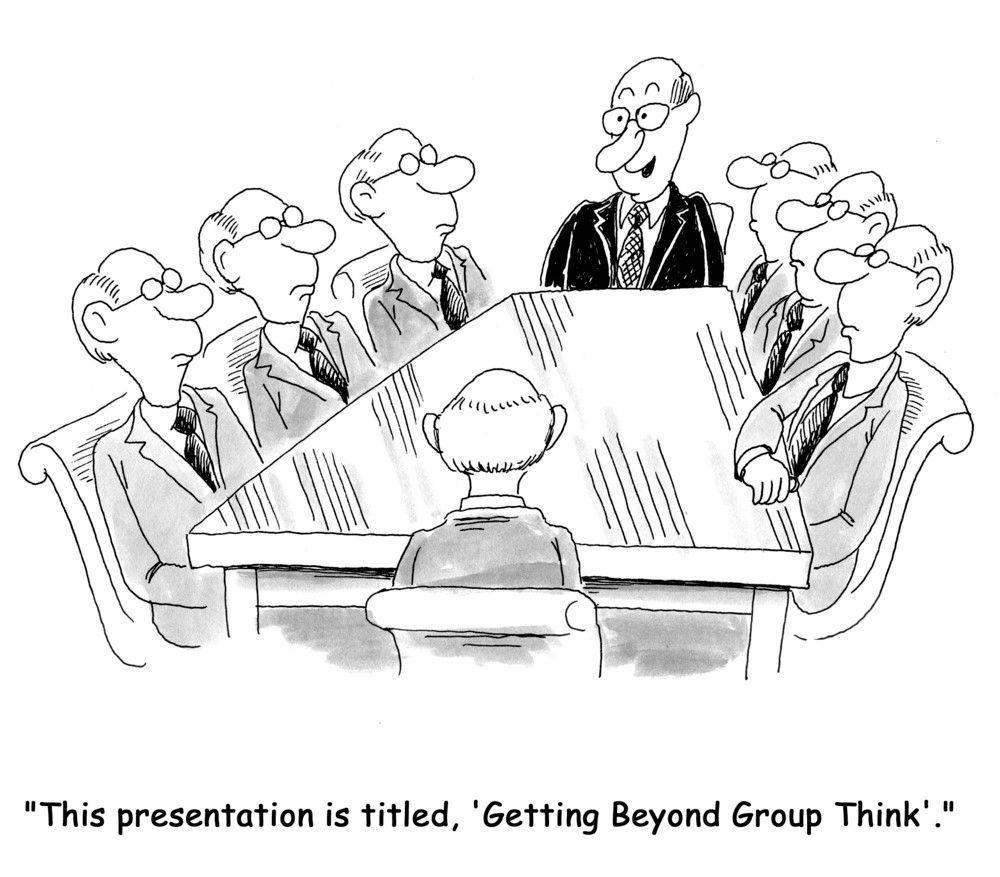
By Jordan Kelly
•
January 31, 2025
Adopting an "anti-template" policy is just as important in the development of bid strategy, as it is in the production of the end submission. Here are three primary reasons to avoid what I call “templated thinking” when formulating strategy: 1) Genericism vs Uniqueness: A Process that Doesn’t Match the Required Mindset Once the nature of a procurement or project is understood, a bid team should endeavour to identify and place focus on the characteristics of that procurement or project that are unique to that specific project. The use of pre-formulated, generic outlines is potentially counterproductive. 2) Strategy Development Should be Led By A Strategic Thinker Running a group through a pre-determined list of questions does not allow conversations to evolve naturally. Instead, thinking and discussion should be channelled along in a lateral – albeit controlled – fashion, developing all threads of input. This is something a template can’t achieve. 3) A Template-Directed Discussion Will Hit An Early Wall A template stops the discussion at a generically pre-determined point – possibly (well) short of the best possible strategic decision.

By Jordan Kelly
•
January 30, 2025
It’s commonly assumed by bid teams that emotion has no place in formal Expressions of Interest (EOIs) or Requests for Proposal (RFPs) . . . and that these should be strictly hard core, fact-and-logic based documents. But this is an assumption – and a debate that needs to be had within the context of the overall pursuit process. My own observations – over a decade and a half of formulating bid strategy – are that, in the early stages of a procurement process (i.e. years or months before a major capital investment) client-side thinking is predominantly qualitative (versus quantitative), subjective (versus objective), and even emotions-based. This is the phase during which marketplace and opinion leader influences, along with personal preferences, are shaping the views of those leading a major procurement investment. This is the "emotions" phase. This is also the phase during which client-facing business development (BD) operatives / pursuit leaders should be employing their best listening skills: listening for biases towards you or a particular competitor (at either the reputational/organisational or the product/service level), listening for objections, and listening for variance in the ranks of the procurement influencers. Fast forward to the production of the formal submission: Assuming your BDs and pursuit leader – as well as any supporting departments within your organisation – have done their level best to steer the prospective client in your direction, there will be a certain mix of emotions with which the client team has arrived at the point of sitting down to formulate its market call documentation. You need to know precisely what that emotional mix is – or at least the predominant emotion within that mix . For example, is it your BDs’ best estimation, from their meetings as well as their secondary research, that this prospective client wants as close to total risk-mitigation as it can get? You’ll have heard the old maxim, “No-one ever got fired for buying IBM.” (If you haven’t, this basically meant that no IT manager ever lost his or her job for making a poor purchase decision, as long as it was an IBM product. This maxim has since been applied to other industries i.e. as long as you choose the biggest, most-established brand name, you’ll have less explaining to do for any risky supplier or service provider selections, or if things go totally pear-shaped.) What’s the Underlying Fear or Desired Reward? If this is the case in any procurement process in which you’re a bidder, the underlying emotion is clearly risk-aversion. Thus, the emotional need is for security – for bullet-proof certainty that the wheels won’t come off during delivery of your project, or that your product won’t fail or be unsuitable for its intended purpose. This, then, is the emotion that you must address in your bid strategy, and in your written submission. And, to the bid writers: There will be words that scratch that emotion, and that are perfectly appropriate to use in a formal EOI / RFP response. (An aside, you need to fire bullets from both guns in your copy i.e. emotion and logic . To whatever degree you’re unclear about which gun’s trigger gets pulled first and which second, in any given section of the submission err on the side of eliciting a visceral reaction in the evaluators, and then following through with logic to consolidate their conviction.) That said, with regard to any emotion-inducing terminology, this should still, of course, be within the realms of acceptable business writing. It also shouldn’t be peppered through your copy erratically and outside of genuine strategy/question-response contextual usage. And Now, To Logic So we acknowledge that emotion will have played a role in the decision as to which service providers or product suppliers were invited to tender for a large procurement; that the initial stages of a major purchasing decision are, at the least, influenced (if not driven) by emotion and subjective influences. Now let’s move to the role of logic – and precisely when to push that button. And that is (outside of the emotion/logic balance demonstrated in the written submission) the shortlistee selection, due diligence, and post-purchase justification phases. These are primarily driven by logic. (Your prospective client would, of course, claim that these phases – if not the entire procurement cycle – are driven 100 percent by logic. But you know better.) To recap then, your strategy and your submission needs to press both buttons. And, within the context of any given question/section of the client’s documentation, you will likely want to do it in the order of emotion backed up by logic . Again, emotion, to stir things up – and logic to reassure the evaluators they’re leaning in the correct direction and to thus move things over the finish line. But, if there’s any doubt in your mind re the nature of the emotion, or striking the appropriate emotion/logic balance, err on the side of rolling out the logic and hitting that hard. Because, at the most decisive moment in the whole process – the moment when the evaluator’s hand moves towards the boxes where he or she enters your section/criteria scores – he or she knows it’s rational, logic-based facts, figures and other hard data that he or she will be required to put forward to justify to any other parties, the scores you’re about to be awarded. In short: Identify the driving emotions behind the procurement and use this insight, both in your bid strategy and in your end-submission, to hook the evaluation team at a “gut” level. Then provide all the logic, rationale, facts and stats to demonstrate how that emotion will be satisfied or put to rest through selection of your proposition over and above any competitor’s.

By Jordan Kelly
•
January 29, 2025
Every meeting opportunity you get in the lead-up to the release of the client’s formal Expression of Interest or Request for Proposal, is gold . Ensure you drill out the most valuable insights possible from each such opportunity, with some critical self-analysis of your preparatory thinking, including: To start with, are we meeting with the right people? Are these the real decision-makers, or as close as we can get to them? What will the customer / client organisation’s representatives expect that we know about their business and this project or procurement? In answering the above question as comprehensively as possible, have we broken down the project or the need into a strategically granular number of parts? Are we gathering as many insights into each of those parts as we possibly can? (Think both primary and secondary research.) In reviewing the above, is there any critical piece of information we’ve missed – either about our own product, service or company, or about theirs? What degree of competitive intelligence should we have done? What would a switched-on competitor have done? What might they know about us? Is this a procurement involving an incumbent? What do we know about the incumbent, the history of the account, and customer satisfaction levels with the status quo?

By Jordan Kelly
•
January 29, 2025
When you’re under the pump with a short submission timeframe, your best default strategy for getting a top-notch bid out the door in good time is to "go with the current" in terms of people’s natural talents. People can be coached in their areas of weakness to a reasonable degree but rarely will they be great in those particular aspects of bid production: people generally gravitate back to the aspects in which they naturally excel and endeavour to avoid those in which they don’t. The first step is to accurately identify the priority skills required for each part of the submission and the process, giving careful consideration to which individuals possess these. Really think about each person and who (rather than what ) they are; “day job” position titles can be misleading in the context of a bid. Often, the strengths and weaknesses you’d assume of an individual in a particular role just don’t import across into a bid team environment in the way you’d expect them to.

By Jordan Kelly
•
January 28, 2025
When it comes to business development conversations, as counterintuitive as it is, "humble" is a winning strategy. The importance of being humble in winning high-value bids – and in any aspect of new-business pursuits – has been my hobby horse for the more than two decades I’ve been specialising in this field. Why is being humble so hard to do, and why is it such a winning philosophy in discussions with prospective customers and clients? Let me count the ways . . . (I’ve only got room for two, but I could write a whole book on it – and I have . Firstly, while you’re busy trying to convince the client or customer of the “smarts” of your service or your product, your customer is doing one of two things: He’s either trying to determine the relevance of those smarts to achieving his goals or the likelihood of them providing the solution he needs / might need . . . or he’s not. You don’t know which he’s doing unless you’re really listening . Ideally, in fact, you should be helping him make the connection . . . but that takes an even deeper level of listening. And that’s where humility comes into its own as a pre-bid engagement strategy. To exercise humility is to listen. The old “two ears, one mouth” equation. If you make it your Golden Rule to listen first, speak second, you’ll be on the path to uncovering critical information / underlying intelligence that will help you deepen the alignment between the customer’s / client’s needs, desires, concerns and priorities, and your product or service. Cut the listening process short and, in direct proportion, you are cutting short your supply of “inside” information on how your offering is, or can be tailored to be, the best possible solution for your customer or client . . . which is the most direct and cost-effective way to solve his or her organisation’s problem or to realise that organisation’s goals. Sales 101? Think Again. This sounds incredibly basic, yes? Sales 101, right? Then why is it that, when I speak with Business Development operatives to gather information to assist the development of bid strategy, nine times out of ten I come up empty-handed in terms of anything really deep and meaningful . . . any news I can use? Why do I end up conducting impromptu, delicate, coaching moments with BDs to demonstrate how to get this information? To alert them to the sort of information they should have listened for in the first place, let alone what they should have proactively dug out? Secondly, there is an enduring belief that “sales” and “business development” are all about “getting our message across”. Consequently, most business development operatives spend more of their pre-meeting preparation time planning what they are going to say , rather than formulating a strategic questioning outline to obtain the answers they need. And of the too-small proportion of BDs who do have the foresight to invest (what I would consider) a decent amount of time and forethought into the pre-engagement planning of questions, most stop after obtaining what are often only superficial answers to those questions . . . before succumbing to the temptation to pick up on an element of those answers and dive in with a sales pitch. What’s the Hurry? Are they concerned this might be their one and only – or their last – meeting with the client organisation’s representatives before probity kicks in? Then they should start their market-scanning, prospect research, and pre-bid engagement processes earlier! Here’s the bottom line: If you’re providing genuine value in those conversations, you’ll be invited back. And the best way to provide value is to ask well-researched, quality questions , listen carefully to the answers, and then ask further quality questions. Do that – and do it well – and the client will know they’re in the presence of someone who’s more likely to provide value, than someone who came in and banged on about the brilliance of their company and its product or service. Asking quality questions, listening carefully to the answers, and knowing what to do next with the resultant information is the No. 1 skill that wins bids.

By Jordan Kelly
•
January 28, 2025
Your bid strategy is only ever going to be that trap, you stop yourself picking up all the cues being projected in the answering o good as the information you feed into your bid strategy formulation process. So it goes without saying that you want to make sure the information and insights gathered in by your Business Development operatives – as your frontline, primary research gatherers – are as accurate and as “real” as possible. On which note, in the same manner as clients will often be cagey or omit key information in tender debriefs, they’ll often be not quite as upfront in pre-probity meetings as you’d like to think or hope. So it’s incumbent upon your “BDs”, to make sure they make a savvy judgement about the accuracy of the inputs they’re getting from the prospect’s personnel. Here are some critical cues that your fellow meeting participant isn’t being completely on the level with you. Evasiveness (a la classic politician-type behaviour) Typical signs are long responses to a question, but no actual direct answer. For example, the procuring organisation might not be certain that they’re really going to actually award a contract at the end of the tender process. Maybe they haven’t got their funding secured yet – but don’t want to disclose that, because that would certainly discourage any bidders that don’t wish to waste time or budget bidding for a project or contract that might be an illusion. A prospect being questioned in this scenario might, for example, go into all manner of sideline issues. Exclusionary qualifiers For example, “fundamentally”, “not really”. These all amount to a desire to give an indirect answer or an indirect denial. They beg for a follow-up question. And you should ensure you ask one – gently, but savvily, nonetheless. You’re going to be investing major resources if you decide to go for this bid, and you want to be doing it on a foundation of true and accurate information. Dressing up the lie “To tell you the truth.” “Frankly.” “Honestly.” “To be honest with you.” You know them. By the way, sometimes these can be simply habitual for someone . . . maybe you do this yourself. Be careful with it. The question may well be asked, Aren’t you always telling the truth? Aren’t you always being honest? So why bother with making a special point of it with the particular statement you’re about to make this time? Offering too much information (especially if some of the information is irrelevant) in answer to a specific question This can (depending upon the context) be indicative of a desire to smoke over the facts. It can also be a ploy to manage your perception and convince you of a greater degree of honesty than is actually the case. This tactic is closely related to the evasiveness tactic. Attempting to be over-convincing This is the opposite of evasiveness. It’s basically an attempt to ensure believability. The skill with this tactic is to work out whether your prospect is over-compensating, or just passionate about the issue you’ve raised . . . which makes it particularly important to have your antenna up throughout the conversation leading up to that point. They’re ALL Diversionary In a sense, all of these are diversionary tactics . . . and any combination of them can be employed. A particularly key point of awareness for a BD in a situation in which they suspect their fellow meeting participants aren’t being straightforward, is to take the prospects’ language literally . For example, “wouldn’t” does NOT equate to “won’t” or “haven’t” or “didn’t”. What these are, are protesting statements without an actual denial. It’s easy to fall into the trap of listening through the filter of your own emotions or your own logic, or your own ethical standards, and to try to make sense of what you’re being told, from that perspective. And that’s a very easy way to allow yourself to be misled. Two Massive Red Flags Two massive red flags that you’re inadvertently threatening to uncover information the prospect doesn’t want uncovered, are: An aggressive or overly defensive response (i.e. attacking the questioner . . . not a good sign), and Turning the question back on the asker, in a particularly animated way. Of course, any of these could be habits in their own right. BUT . . . too many in quick succession, form what is known as a “cluster” . . . a combination of tell-tale signs that definitely spell cause for concern. Also in the outright dishonesty category is a verbal / non-verbal disconnect. A simplistic example: A prospect nods his head while giving a “No” answer verbally. That’s a cue that the brain is so confused with trying to disguise or protect their disingenuous position, that it can’t keep up. Closely related to that – in the arena of body language – is a new, sudden physical movement at the point where the body connects with the floor or the seat e.g. bouncing the foot or shifting in the chair. Investigators say this is a big one. Similarly, sudden grooming gestures, such as fixing a tie, or running the hand across the hair, glancing at a watch, moving the hands to the face. This is a typical, unconscious response when someone flicks into the “fight or flight” mode of the autonomic nervous system. The Eyes Are Indeed the Windows of the Soul Still on body language, remember the adage, “the eyes are the windows of the soul”. Looking up to the right, means they’re visually picturing or constructing something that’s never actually happened. Looking up to the left, means they’re remembering something. However, that applies only if they’re right-handed. In the case of a left-handed prospect, the opposite will apply . . . so be careful with that one, especially since you may have no idea whether your prospect is a right or a left-hander. And still on eyes, shifty eyes usually indicate dishonesty. Here’s the big clue with a shifty-eyed meeting participant: Does he or she look straight back at you after completing a statement? If so, he or she is typically trying to see whether you buy what’s just been said. Of course, on the phone, you lose the nonverbal cues. But you can, for example, still hear a chair moving or paper shuffling, or a keyboard being tapped, when a question leaves the other party feeling awkward and fiddling unconsciously while trying to think up (what is going to be) an unnatural answer. Aside from being aware of these cues per se , and the likelihood that they’re being employed more often than you’d like to think, your most critical communication strategy is not to allow your mind to fast-forward to your next intended question or statement. As soon as you fall into that trap, you stop yourself picking up all the cues being projected in the answering of your current question. A Word of Caution Mastering this is the field of the expert. It’s easy to learn these general principles and then make the mistake of applying them universally, in an overly simplistic manner. There’s a wad of variables to take into account: Is something entirely normal behaviour for the individual you’re conversing with (versus does their communication modus operandi suddenly change . . . especially in mid-conversation)? If you know someone and you’ve got a baseline understanding of them, you know how that individual typically communicates and conducts themselves . . . then any variance on this is a reasonably reliable flag. Is someone demonstrating “closed” body language (arms crossed, for example) purely because they’re cold? Make an indirect observation that helps you confirm or deny that. Is someone jiggling their foot simply because they actually are a jiggler? If it appears to be a response to a statement or a question that made them uncomfortable, move on to a more comfortable topic . . . and then move back towards the less comfortable one. Does the jiggling stop and then resume? When someone is stressed, the body emanates that stress . . . generally. Compulsive, pathological liars can, of course, be a totally different kettle of fish. They take a whole elevated level of smarts to deal with. Let’s hope we don’t encounter too many of those in the organisations of our prospective clients. But if you do ever encounter someone you suspect falls into that category, here are three key cues to look for: Indirect answers Yes, it’s a typical ploy that some people use to get out of a tight spot. But compulsive liars turn the indirect answer into an art form. Repeated vagueness in statements People who lie will typically avoid being detailed; they know there is too much to have to remember in a future conversation.

By Jordan Kelly
•
January 27, 2025
Start your shortlistee presentation preparation checklist with the following basics: Is everybody versed in how to get to the venue, travel times and contingency considerations e.g. traffic issues? What is the process or expected norm for introductions (a) upon arrival, and (b) preceding the actual presentation? What equipment is available? Are our presentation tools compatible? What additional, non-technology, equipment do we need, and who will provide this? If the client will provide this, is what’s in their mind the same thing as what’s in our mind? Check that what we call certain items and tools is the same as they call them. What’s the policy on hand-outs? Is the time allocation loose or concrete? Have we timed ourselves? What’s the Q&A protocol? Do we have everyone on board to attend that might be needed in a Q&A situation? How will we be expected to wrap up?
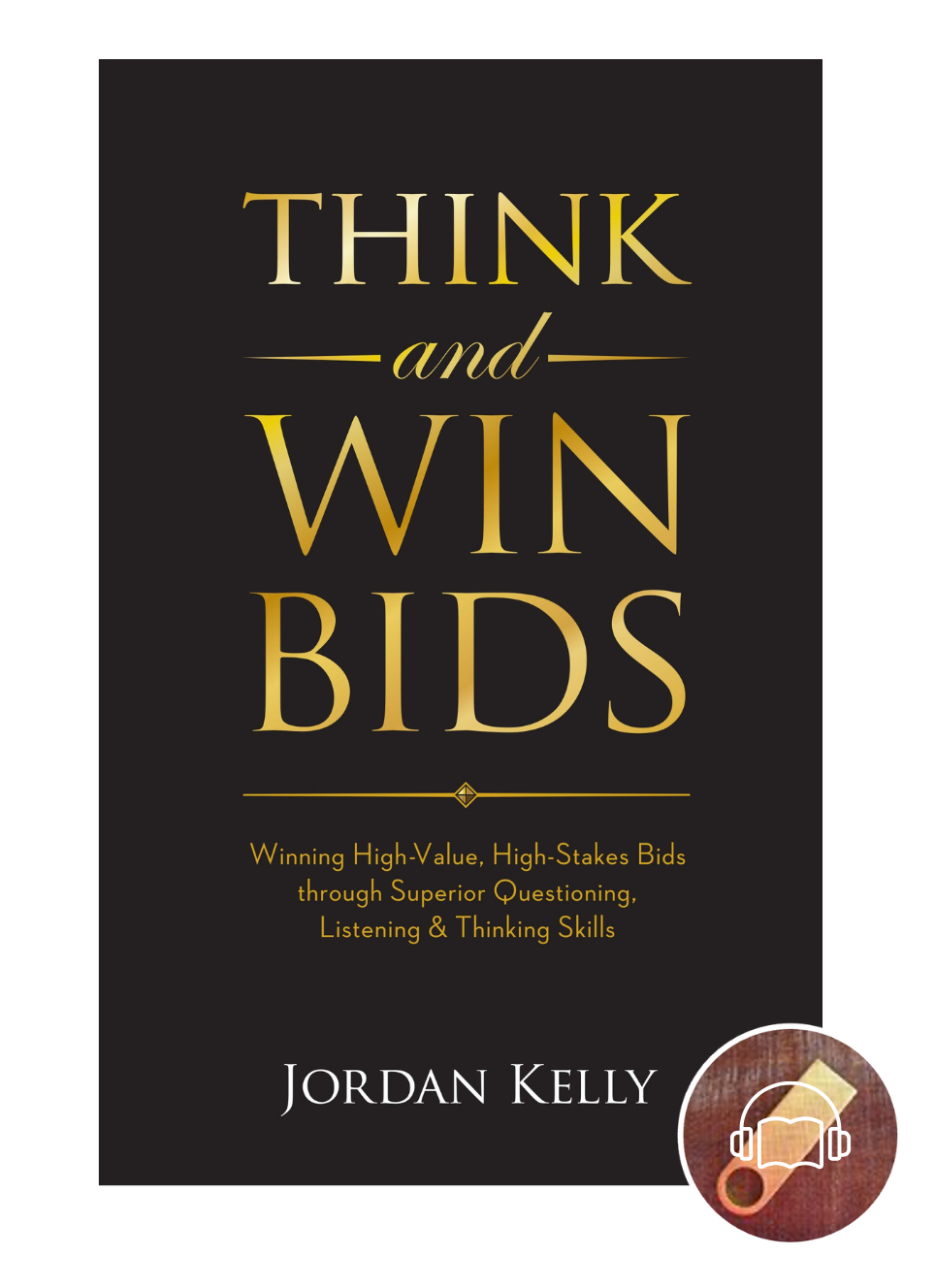
By Jordan Kelly
•
January 23, 2025
THINK AND WIN BIDS Winning High-Value, High-Stakes Bids through Superior Questioning, Listening & Thinking Skills The three fundamental skills of a successful bid strategist and bid leader are the ability to think , to listen and to ask quality questions . ' Think and Win Bids ' is more than a catchy title. This is a book with a strong message and a wealth of commanding insights into the fundamentals of winning bids . . . including the need to deeply understand a potential customer or client organisation, the world in which it operates, its intended procurement, and the all-important backdrop against which that procurement is being made. The capacity and willingness for a bid leader or business development professional to think deeply, logically, strategically and client-centrically is a key differentiator between those who can sustain a high win rate and provide much-needed leadership in new-business pursuits, and those who flounder in such a role. It’s a skill set that can be taught – so long as the necessary degree of humility and “coachability” exists. And that’s the reason this book was written. Its title is an unashamed play on that of the all-time business classic, Think & Grow Rich , penned in 1937 by leading business thinker of his time, Napoleon Hill. This highly readable, compact book will teach you: The importance of understanding your customer or client organisation and its procurement from a holistic (versus a narrow, service- or product-focused) perspective. How to gain a detailed and bid-winning appreciation of the procurement psyche of your prospective customer or client organisation. How to determine the most valuable information to acquire about a customer or client organisation’s intended procurement and the bigger picture directing or impacting it. How to plan for the acquisition of the above points of critical knowledge. The difference between high-value and low-value conversations and how to plan for the former. The specific differences between great listeners and average listeners. What highly effective business development operatives and bid professionals do that average ones don’t. The many types of information available to help inform your bid strategy, and how to source them. Little-known sources of competitor information. The criticality of channelling information back, in a valuable format, from the client or customer coalface to the bid team. What you need to know when your client organisation has its own (up-the-line) client. How to take advantage of arrogance on the part of the competition. The importance of avoiding arrogance in your own organisation. The value of “sleuthing” the customer’s documentation versus simply “reading” it. The critical distinction between “features” and “benefits” and how to capitalise on your ability to translate one into the other. What constitutes bid strategy . . . and what doesn’t. How to turn raw information into bid-winning intelligence. Working wide while drilling deep in the strategy formulation phase. How to develop a winning bid strategy. Why “thorough” is the best default position when it comes to strategy. Why talk of “silver bullets” is naive. How to avoid confusing tactics with strategy. Why templating is the opposite of thinking. The importance of documenting your bid blueprint in detail. How to position your organisation as a trusted advisor. How to get the most out of a de-brief. How to hire the most effective professional support.


